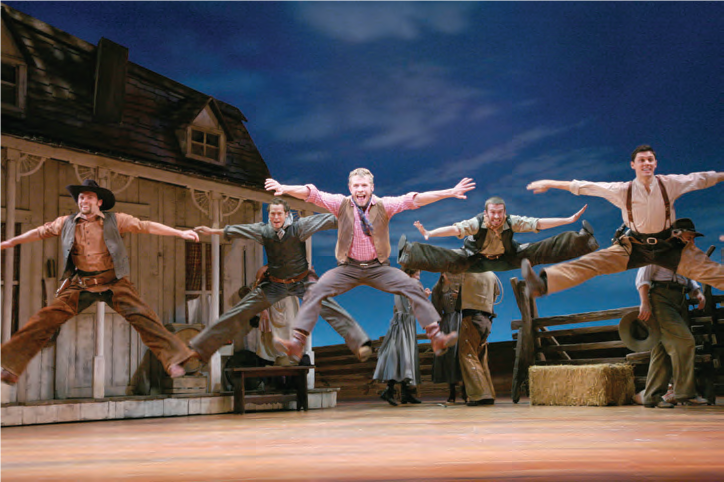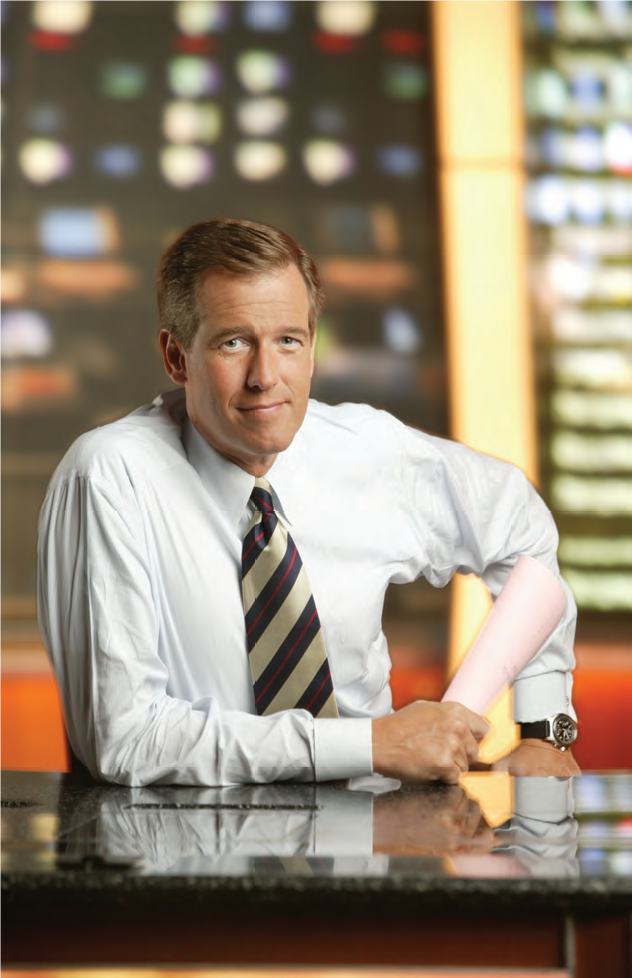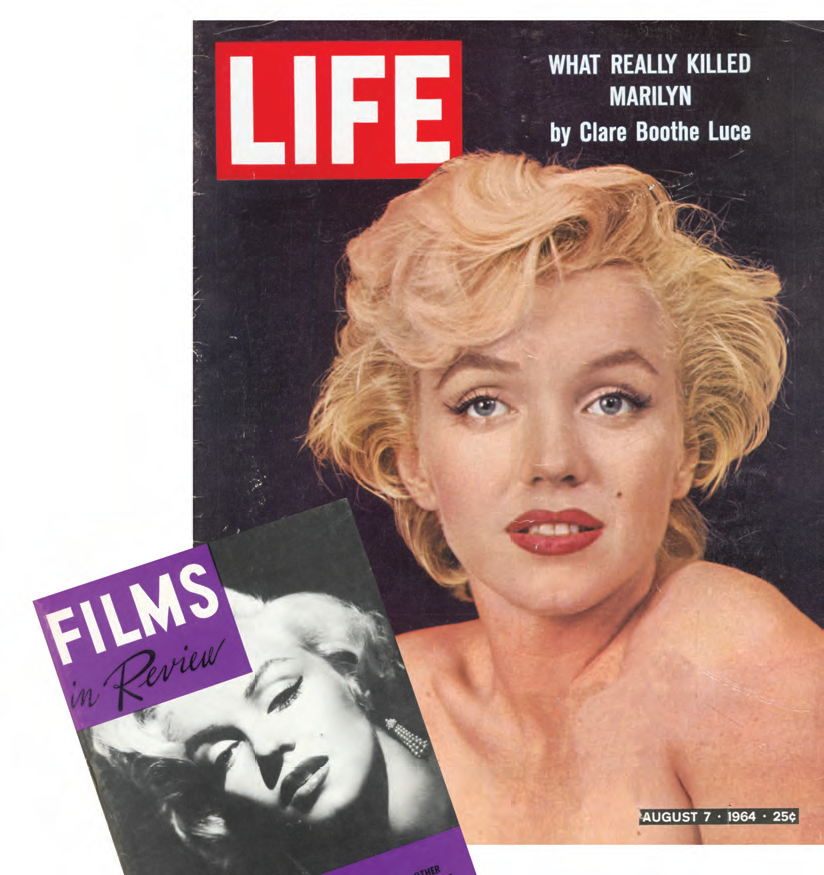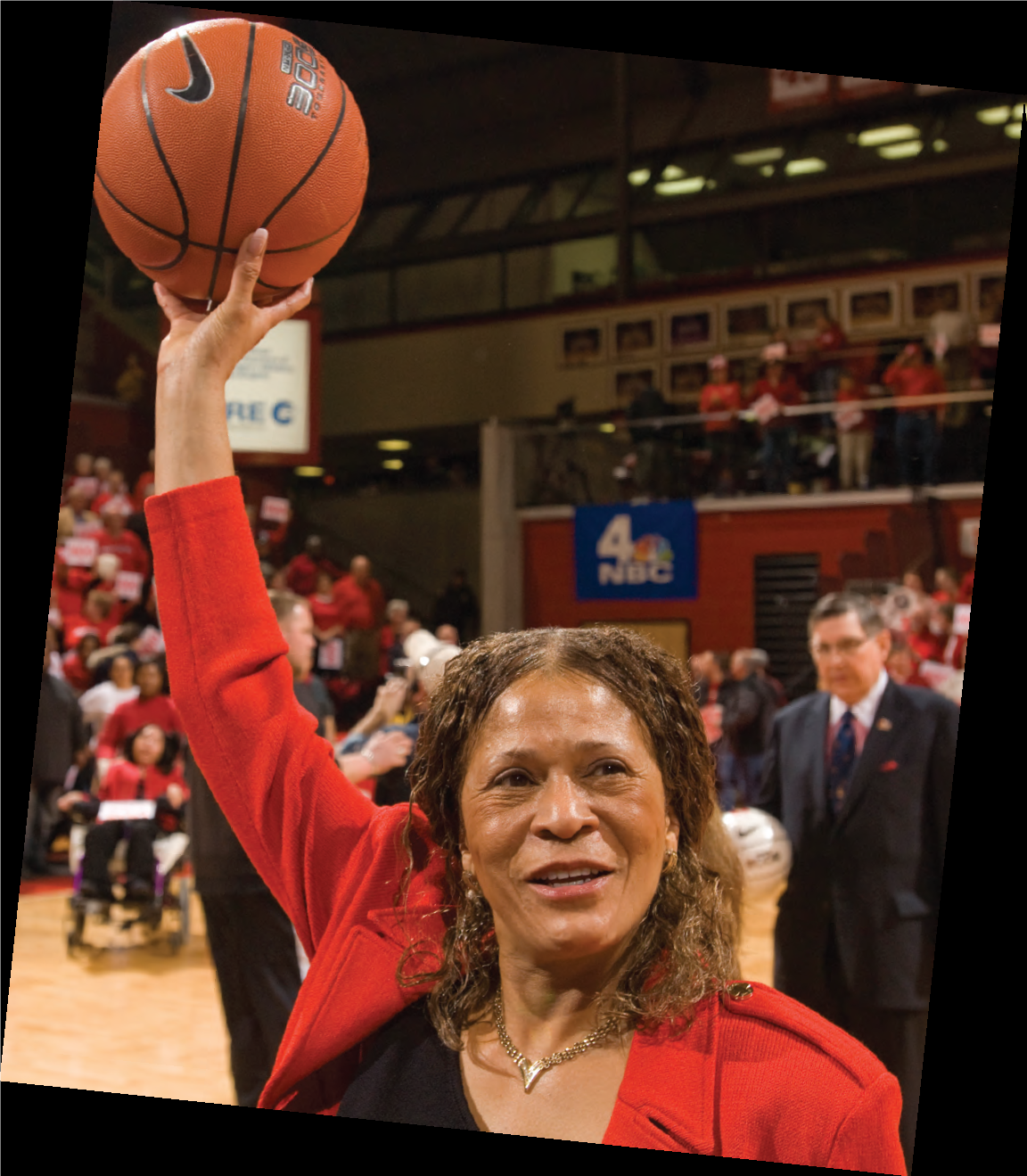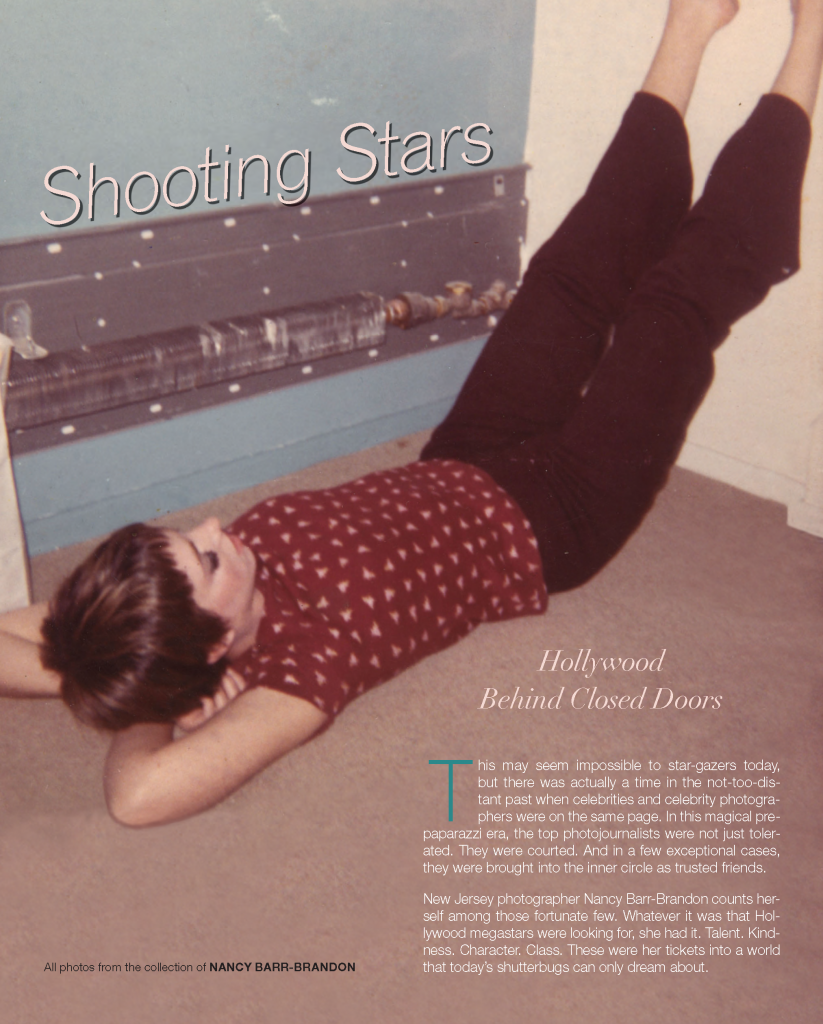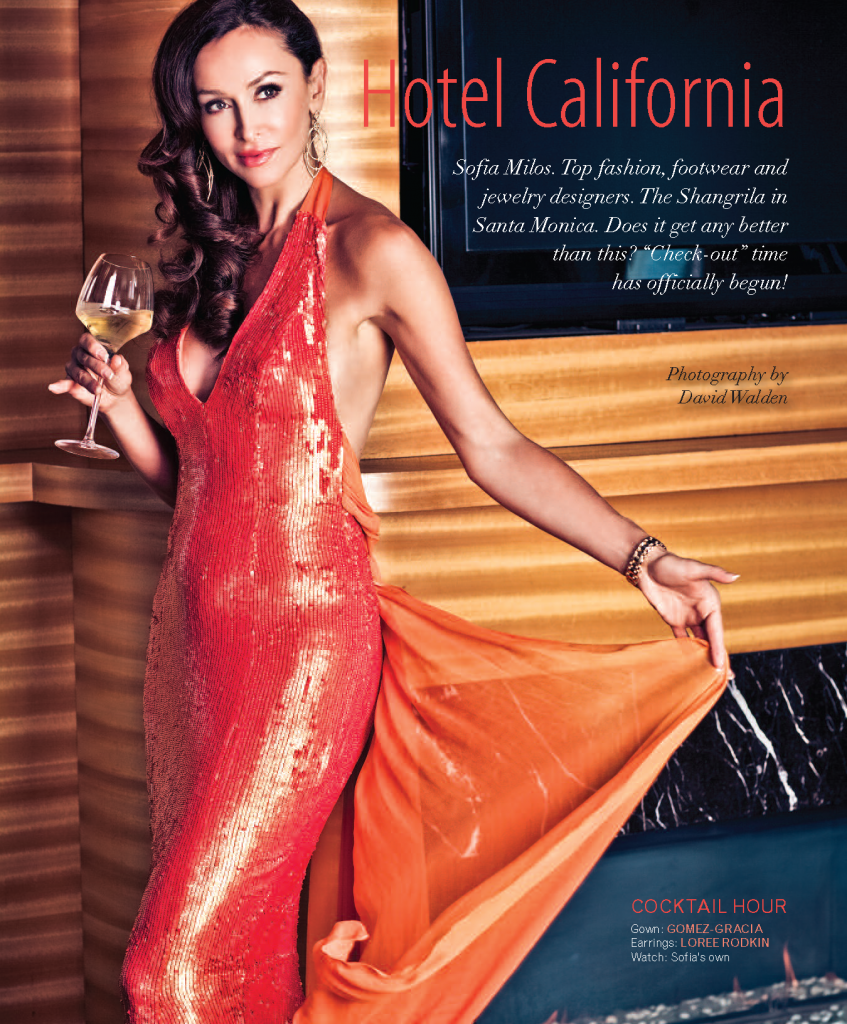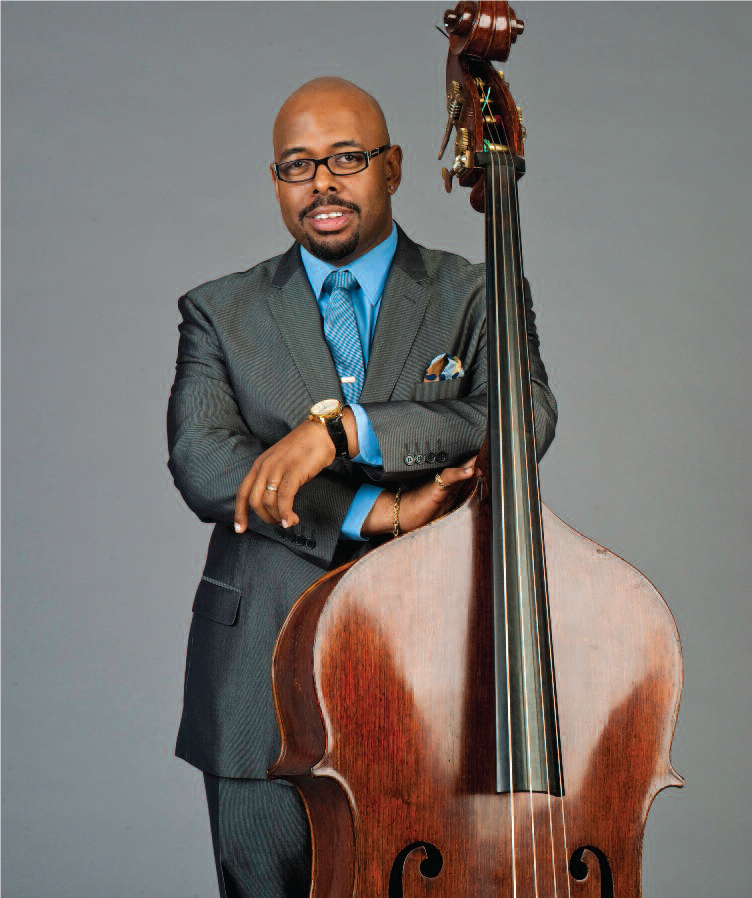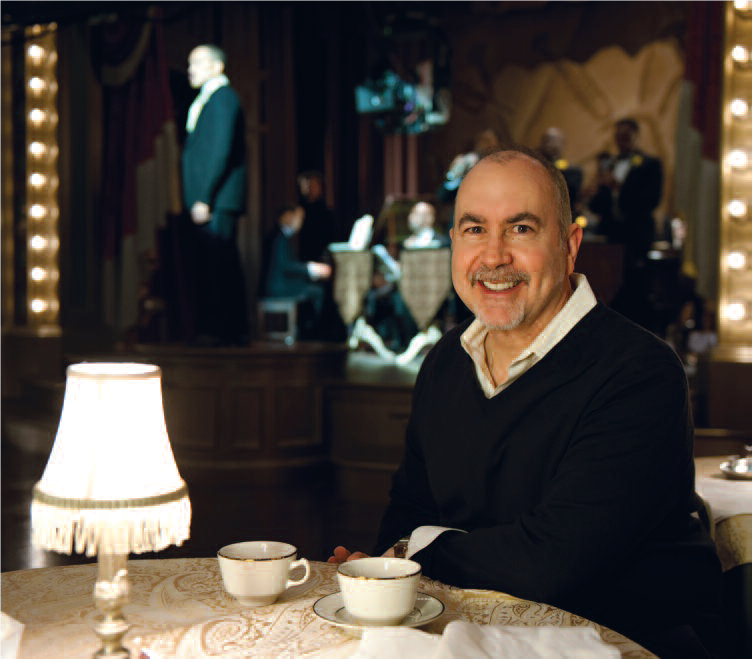- 440 Parsonage Hill Road Short Hills NJ 07080
- (973) 467-8882
- visit website
- Renaissance Newark Airport Hotel 1000 Spring Street (Routes 1 & 9 South Service Road) Elizabeth NJ 07114
- (908) 994-35138
- visit website
- 22 Brookside Dr. Millburn NJ 07041
- (973)376-4343
- visit website
- 1000 Morris Ave. Union NJ 07083
- (908)737-7469
- visit website
A Jersey Girl harnesses the power of the Net to make her own breaks in the music world.
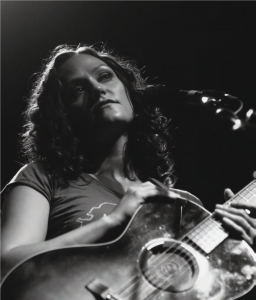
Photos: Deborah Lopez
There was a time in the not-too-distant past when the fate of a singer/guitarist/songwriter like Allie Moss would be in the hands of managers, producers, agents and lawyers. Indeed, the Folklore of Creativity abounds in cautionary tales of the tragedies inherent in the battle between art and commerce. Catching the public’s collective ear has always presented emerging artists with problems. For decades, they have been hostage to the stranglehold that commercial interests had on production, publicity and broadcasting.
Paying for studio time, getting good placement for your CDs in stores, and arranging for airplay frequently involved some sacrifices—like signing over percentages of one’s earnings. For life. The 20-something musicians of today, while hardly immune to bad endings like these, have taken progressively stronger control of their destinies. Moss, whose approach to self-promotion is as smart as her music, provides a refreshing view of the new, largely Internet-based methods of production and public relations.
The results speak for themselves. Just since the leaves began turning this autumn, she has had her song “Corners” featured on the ABC series Brothers & Sisters, followed by a career-boosting studio segment on Good Morning America. Moss’s fans keep up with her on Facebook, MySpace, YouTube, iLike and Tumblr. Her new album, Passerby, can be downloaded through iTunes or Amazon. Moss’s performance dates (she tours with Ingrid Michaelson) are listed at alliemoss.com. And those who hang on her every lyric can also hang on her every word at, you guessed it, Twitter.
Welcome to the world we live in—a bewildering matrix of blogs, search engines, social networking sites, cell phones, WiFi… but the basic situation is that you can access Ms. Moss’s oeuvre 24/7/365. Go check out her act at a club or in concert, and when you get home you can find dozens of her MP3 files; some are free, some are for-pay downloads. But the bottom line is that none of this is under the control— financial or artistic—of the record labels. Moss lives—or, more accurately, since she tours constantly, alights from time to time—in Jersey City. She laughs about her somewhat frantic life and admits that touring seemed an impossible goal when she was a child, since she suffered from paralyzing stage fright. “I got so scared once that I completely forgot the lyrics to the song I was singing. I just stood there, horrified and embarrassed.” As a teenager, Moss began journeying into New York to listen to friends work in clubs.
This led to her singing and playing backup, and then to finding gigs of her own. Several years ago she met Michaelson, a fast-rising singer and songwriter from Staten Island, and began backing her. Eventually she started to tour with Michaelson. Soon came their appearance on Good Morning America and then a gig as an opening act for the Dave Matthews Band. As Moss rattles off the names of her favorite contemporary musicians—among them Josh Ritter, Death Cab for Cutie, David Bazan and Greg Laslow—she habitually refers to their web sites, their pages, their video clips and the mashups they’re in. If you’re a young musician, it’s an open-source world. As Moss says, “Radio is cool, and once you’re established it’s critical. But it’s hard to break your music on radio if you’re not already a name. It’s so easy to find the music you want to hear online.” voice and deft guitar work.
Her writing explores the complex, sometimes joyous, sometimes heartbreaking passage from teenager to woman. Moss dodges the Pollyanna mentality that can make some folk music unpalatable. Her urban background doesn’t provide room for many illusions, but she knows, and expresses, the difference between being skeptical and falling into cynicism. Moss talks writing while on tour, snatching bits of time to jot down lines in an always-present notebook. On the song “Paper Cup,” she balances hope and caution, encouragement and doubt, and her delicate tones perfectly balance her spare, elegant playing. Many older, more experienced writers would love to have her rhetorical command. Of course, there’s the side of Moss that likes to sing “Rubber Ducky,” too. A spare, elegant “Rubber Ducky,” to be sure. In the future? “I love playing with Ingrid, and I guess I’ll do it as long as it works for both of us,” Moss says. “She’s so talented and so smart. I’ve learned tons from her, not only about writing and playing, but about the business side, about how to deal with touring.” So there’s that, and doing gigs in places like Kenny’s Castaways and the Baggott Inn in New York and Maxwell’s and The Saint in New Jersey, and writing songs. Moss also teaches voice.
She’s a devotee and practitioner, and, she thinks, the only Certified Level–1 instructor in the area of a method known as Speech Level Singing. And then, after all that’s taken care of, she allows, half sarcastically and half-wistfully, that she’d like to find time for some “normal” stuff. Alas, as Allie Moss’s star continues to rise, she may find that normal is a relative term…and that time could soon be the most precious commodity of all.
Editor’s Note: Bill Mehlman is a freelance writer with a passion for the music business. He lives and works in New York City.
Backstage at Paper Mill Playhouse
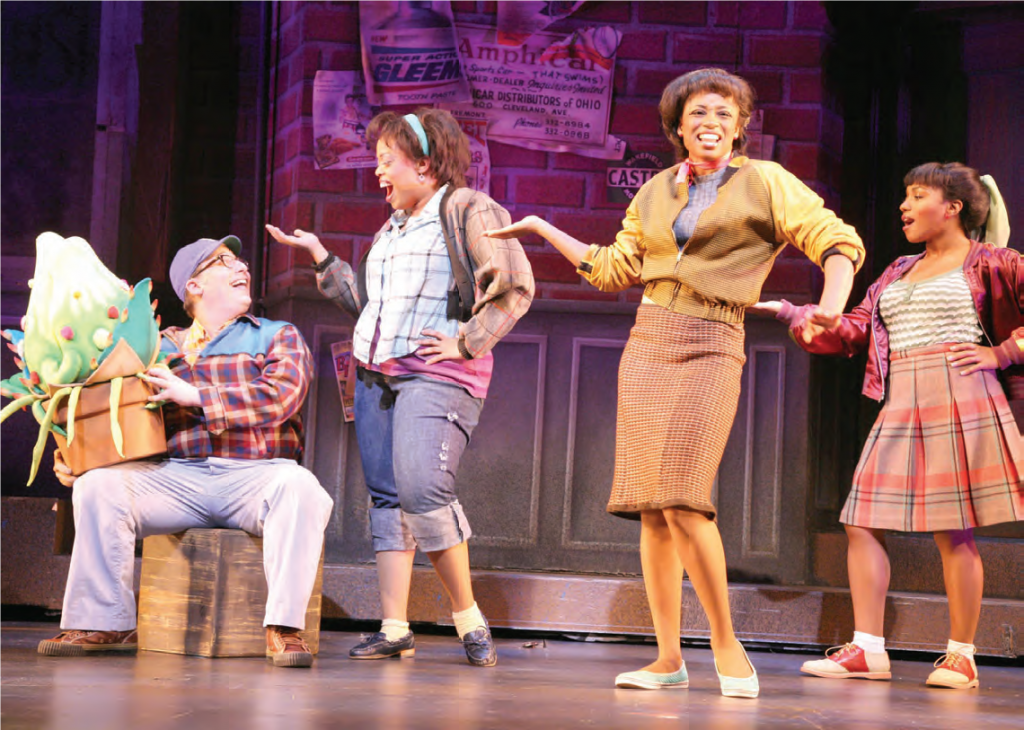
Oh, were it only that simple. Big names may help Paper Mill Playhouse stay afloat, but it’s cultivating the little ones that guarantees a bright future
 Financial Crisis May Force Paper Mill Playhouse To Go Dark. That was a headline from April 2007—not 2008 or 2009. Perhaps the timing was a blessing. Had New Jersey’s state theater run aground amidst of the current financial crisis, it might have gone the way of Lehman Brothers. Instead, a few weeks later, thanks to $300,000 in donations, audiences were treated to a rousing production of Seven Brides for Seven Brothers. Next, the Township of Millburn stepped in and purchased its Brookside Drive land and buildings for $9 million, then leased them back to Paper Mill for 75 years as a hands-off landlord. Present crisis averted, the folks that run PMP began thinking about the future. The buzz words they use are Inter-generational Programming. “Productions specifically designed to broaden our audience appeal to a younger group,” explains Shayne Miller, Director of Press and Public Relations. “By providing ‘family favorite programming’ in our mix—for example High School Musical and Peter Pan—we may attract first-timers to the theater as parents taking their children.
Financial Crisis May Force Paper Mill Playhouse To Go Dark. That was a headline from April 2007—not 2008 or 2009. Perhaps the timing was a blessing. Had New Jersey’s state theater run aground amidst of the current financial crisis, it might have gone the way of Lehman Brothers. Instead, a few weeks later, thanks to $300,000 in donations, audiences were treated to a rousing production of Seven Brides for Seven Brothers. Next, the Township of Millburn stepped in and purchased its Brookside Drive land and buildings for $9 million, then leased them back to Paper Mill for 75 years as a hands-off landlord. Present crisis averted, the folks that run PMP began thinking about the future. The buzz words they use are Inter-generational Programming. “Productions specifically designed to broaden our audience appeal to a younger group,” explains Shayne Miller, Director of Press and Public Relations. “By providing ‘family favorite programming’ in our mix—for example High School Musical and Peter Pan—we may attract first-timers to the theater as parents taking their children.
These parents are likely to be in the important age group of 35 to 55. Once at the theater, we have the opportunity to convert these parents to return, as a couple, to additional shows in our season that may be more adult-focused. We can then target them via direct-response efforts.” Those efforts include trumpeting the big names that have graced the PMP stage since it began operating some 75 years ago. Lynn Redgrave (top left), Ann Hathaway, Patrick Swayze, Bernadette Peters, Liza Minnelli, Chita Rivera, Carol Channing, Betty Buckley, Ann Miller, Estelle Parsons, Edward Villella and Nick Jonas (yes, that Nick Jonas) are among the luminaries whose credits include Paper Mill appearances. This past fall, Paper Mill 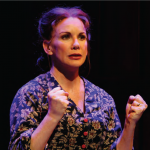 Playhouse presented Laura Ingalls Wilder’s Little House on the Prairie as a musical. It starred Melissa Gilbert (middle left), who played Laura in the famed television series from the age of 9 to the age of 20. In this production, the 45-year-old Gilbert—who recently served two terms as president of the Screen Actors Guild—was cast as Ma.
Playhouse presented Laura Ingalls Wilder’s Little House on the Prairie as a musical. It starred Melissa Gilbert (middle left), who played Laura in the famed television series from the age of 9 to the age of 20. In this production, the 45-year-old Gilbert—who recently served two terms as president of the Screen Actors Guild—was cast as Ma.
Another noteworthy notch in PMP’s belt. “We will also look for shows with broad inter-generational appeal, like 1776 (bottom left),” adds Miller, “which was appealing to seniors, parents, school groups and children. Our Children’s Theater and Education programs can also serve as an entry point to the theater.” For Artistic Director Mark Hoebee and Executive Mark Jones (left), reaching out to young audiences is more than just a marketing strategy. He sees the theater’s playing an important part in the Garden State’s education picture. “We need to have the arts in our children’s live as they are being educated,” says Jones. “Our role, within that, and in the state of New Jersey, is to have a statewide Theater Education program.
It doesn’t just bus kids in to see one of our mainstage productions, but actually works in the schools proactively, runs a healthy theater school with five hundred people enrolled— which we have—and runs one of the best summer conservatories in America. The Paper Mill’s ‘Rising Star Award’ program, which encompasses all twenty-one counties in the state, is very popular.” Whatever the future holds for Paper Mill, and the arts in general, some things will never change. “We’re unique,” says Jones, “because we have original productions of musical theater classics, as well as new works. Here at Paper Mill, we put our stamp on everything we create.”
All photos courtesy of Paper Mill Playhouse: Little Shop of Horrors, Lynn Redgrave/The Importance of Being Earnest, Kiss Me, Kate and Oklahoma!: Gerry Goodstein; Melissa Gilbert/Little House on the Prairie, The Musical: Jerry Dalia; 1776: Kevin Sprague.
Don’t say anything about New Jersey around BRIAN WILLIAMS unless you have something good to say. The Garden State was a springboard into a news career that has seen him defy the odds and reach the pinnacle of his profession. When Williams has to dig deep for strength or  inspiration, New Jersey serves as his touchstone. The instant he motors past that center stripe in the Lincoln Tunnel, he feels he is home again. In his chat with the NBC Nightly News anchor, EDGE editor MARK STEWART discovers that what you see (and hear) is what you get. Whether getting a story right, hosting Saturday Night Live, or putting his money where his heart is, Williams is as authentic as they come.
inspiration, New Jersey serves as his touchstone. The instant he motors past that center stripe in the Lincoln Tunnel, he feels he is home again. In his chat with the NBC Nightly News anchor, EDGE editor MARK STEWART discovers that what you see (and hear) is what you get. Whether getting a story right, hosting Saturday Night Live, or putting his money where his heart is, Williams is as authentic as they come.
EDGE: To reach the level you have in the business, an anchor must find the perfect balance between being a newsman and a performer. How did you find that balance?
BW: I’ve never had a lesson in performance. I’ve never had anybody tell me how. I have had great role models, from watching Cronkite every evening of my young life—I lived in a household where dinner would not be served until he said, ‘That’s the way it is’—to working beside Dan Rather at CBS and, more importantly, being taken under the wing of Tom Brokaw at NBC. He made sure I was in the right spot at every point. When it was time to be chief White House correspondent, he made it clear to me that it was time to be chief White House correspondent, and I moved down to Washington with my family. So at every point I’ve been so fortunate either to have watched a great example or worked next to one, and be mentored by one.
EDGE: Cronkite was your idol.
BW: He was my absolute, North Star idol. Walter Cronkite was the guy I always wanted to be, and he lived long enough for me to make that very clear to him. That was one of the great moments of my career.
EDGE: You started your climb in Middletown, New Jersey. How did you work your way to the top?
BW: I didn’t have any contacts. I had no way in through the front door or the back. So climbing in the window of the television news business and coming up through the basement is the only way I know how to get ahead. That meant moving out to Kansas, learning the business, and being willing to crawl through broken glass to get ahead. If you have your eyes on a prize in this country, there’s nothing that can stop you—I’m a living example of that. I am not college educated, I did not grow up with honed skills or a family that knew what a prep school was. I didn’t know what the Ivy League was when I was in high school. It just wasn’t in my ken. But if you’re a hustler—and I’ve never regarded that as a pejorative, that word’s a positive in my book—the world is your oyster.
EDGE: At what point did you become comfortable being Brian Williams?
BW: I’ve thought about it a lot. Various local stations in my twenties on my way up made vain attempts to put me with consultants. I had to sit through a focus group once and listen to what they said about me. That is not for the faint of heart, and something I don’t recommend to people. But after a while, as I came up through the industry, I thought Well, this must be working. I have no choice but to be who I am. I went with who ‘brung me to the dance.’ Even so, my daughter will tell you the Brian Williams on Nightly News is not the Dad she knows. She knows someone else entirely. She will tell you that the Brian Williams of Saturday Night Live or Jon Stewart or Conan is much closer to the guy she knows.
EDGE: How did the SNL hosting gig develop? Who pursued whom?
BW: I was pursued. Lorne Michaels had made noises about it for years, actually. Lorne, sadly, has to sit through a lot of dinners and charity events that I emcee, and I tend to mix it up during those because they can be as dry as dirt. Finally he came to me and said, ‘This is a serious offer’ and gave me an airdate. I told him I had 26 years of a career to worry about and I knew I could easily dispose of it in 90 minutes. I asked everyone in my life—I asked not just Tom Brokaw, but also his wife Meredith. Jane and I talked about it for hours. I wanted to be sure that I wasn’t flushing what credibility I had down the toilet.
EDGE: I recall saying to my wife when you were announced that this was the bravest hosting decision in the history of the show.
BW: When I wrote the monologue, the first thing I said was, ‘I know what you’re thinking…is this really a good idea?’ That was actually my favorite moment in the show, because it was the elephant in the studio.
EDGE: So what made you say Yes?
BW: I had never met Chevy Chase and I saw him outside SNL in the hallway talking to a friend of mine. I went up to him, introduced myself, and asked him what he thought I should do. I explained that I owed Lorne a decision tomorrow. He said, ‘I watched Dan Rather for years and I never got any closer to knowing who he is. I think if you do this, I might get to know who you are.’ And that was the clinching vote. I called Lorne and accepted. I had to reject about fifty percent of the sketch ideas the writers proposed. Their job, of course, is to make a total horse’s ass out of the host.
EDGE: The skit I remember is the one where you played a firefighter. It was a totally authentic performance. Where did that come from?
BW: Sharp-eyed viewers will notice that the helmet on my lap said OVFC #11 and Williams. That stands for Old Village Fire Company, Engine 11, in Middletown Township. That was my gear. As a firefighter years ago, on a volunteer basis in Jersey—who still hangs around New York City firefighters— that was the easiest ‘character’ I could have done. I knew the lingo already, so it was easy.
EDGE: There’s still a lot of Jersey in you, isn’t there?
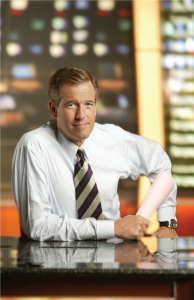 BW: When I pass into New Jersey there’s something that happens to me at mid-span on the GW Bridge and midway through the Lincoln Tunnel. I call it my ‘power corridor’. I feel most at home there. I speak New Jersey. New Jerseyans are real. It’s the most densely populated state in the union and yet I can tell from your accent if you’re from South Jersey or North Jersey. I can usually tell if you’re from the Mid Shore. We have a lot of different regions, and yet I think there’s a baked-in pride. We have to put up with a lot of crap. I don’t take kindly to a lot of Jersey jokes because I know a lot about my state. Way too many people judge our state based on one stretch of highway on the Turnpike along refinery row. And that’s unfortunate. I think if we had it to do over again, we wouldn’t route so many millions of motorists right past the most heavily industrialized region of the East Coast.
BW: When I pass into New Jersey there’s something that happens to me at mid-span on the GW Bridge and midway through the Lincoln Tunnel. I call it my ‘power corridor’. I feel most at home there. I speak New Jersey. New Jerseyans are real. It’s the most densely populated state in the union and yet I can tell from your accent if you’re from South Jersey or North Jersey. I can usually tell if you’re from the Mid Shore. We have a lot of different regions, and yet I think there’s a baked-in pride. We have to put up with a lot of crap. I don’t take kindly to a lot of Jersey jokes because I know a lot about my state. Way too many people judge our state based on one stretch of highway on the Turnpike along refinery row. And that’s unfortunate. I think if we had it to do over again, we wouldn’t route so many millions of motorists right past the most heavily industrialized region of the East Coast.
EDGE: So what is it that defines New Jerseyans?
BW: There’s a moxie, there’s a street smartness, there’s a reality to being from New Jersey. New Jerseyans have texture. They have grit. We aren’t always the most earnest members of the jury pool, but we’ll be the jury foreman, and we’ll get you a verdict.
EDGE: What role does grit play in your job?
BW: Grit is what it’s all about! Grit is life experience. It’s having a few layers of paint worn off of you, so you’re not shiny and new. This is not your first rodeo. A little skepticism. Even some cynicism. Grit has served me well in life. I just think grit equals authenticity today. And to make it today, you’ve got to have it.
EDGE: What do you remember when you look back on your New Jersey days?
BW: I had the perfect upbringing; I wouldn’t do it any other way. I get very emotional and gauzy, warm and fuzzy, and romantic about my upbringing—even though at the time it felt ordinary and at times a struggle. There were kids at Mater Dei High School who had a lot more than me, and it wasn’t my proudest moment to look at the back page of the yearbook and see the colleges other kids were headed to. And while I screwed up my education and came within inches of becoming a colossal failure—I interviewed for a police dispatch position out of Freehold thinking that would be a good, steady job—life went in a different direction. But when I go back there now I would like to think I have a flag in that soil that is mine.
EDGE: One of those flags will be in Newark soon, where the Horizons Summer Enrichment Program is opening a new location. You and Jane must get pulled in so many directions, and yet you’ve devoted yourselves to Horizons completely. What is it that you have found so appealing about it?
BW: You know how they say We know you have a choice in airlines and we appreciate you flying with us? My wife and I have been blessed in many ways in life, mostly financially—we never thought we’d have any money—and we have chosen to give most of our charitable dollars to a single cause, because Horizons changes lives in front of your eyes. The children chosen for the program end up in a different life. They are transported, as if by a giant hand, and lifted up. It’s just the most extraordinary program, and it only exists because of the good people who run it. Mr. and Mrs. Williams will only be happy when there is a Horizons-affiliated school in every city, town and hamlet that feels they need one. If people would just go to the web site [horizonsnational.org] and watch the piece we did, it would be the leading school enrichment program in the country. I’ve just never seen a return on the volunteer hour or donated dollar quite as dramatic as Horizons.
EDGE: EDGE readers live and work relatively close to the new location. Tell them why they should volunteer or donate to Horizons?
BW: It’s that feeling you get when you give a gift that’s so great that it gets your endorphins going just to give it away. The feeling you’ve knocked one out of the park. Multiply that by a hundred. Or a hundred thousand. That’s how giving to Horizons will make you feel. Most Americans, in the course of their lives, are lucky if they get to change one or two lives. This is a very easy way to do that on a larger scale, with a tangible, human, smiling result.
Marilyn Monroe is said to have had $3.50 in her apartment when she died. Yet she will make more money this year than all but a handful of Hollywood stars. How is she worth more dead than alive? Who gets that money? Who doesn’t (but should)? Welcome to The Marilyn Wars.
Marilyn Monroe has been dead for 48 years. Do you care? In some years the dead Marilyn earned over $7 million on sales of over $60 million in merchandise bearing her name or image. Still don’t care? Well, I know who does care. A unique group of sharp business people, creative lawyers, nostalgic purveyors of porn, scheming collectors, paranoid political conspiracy theorists, fraudsters and infringers, fans and obsessed idolaters, and loyal devotees who seek to prolong their candle in the wind. These are the soldiers in The Marilyn Wars. They are engaged in a struggle of constant calumny, lawsuits, claims of fraud and theft, and even threats of duct-and abduction.
The main battlegrounds are the federal courts and state legislatures, and the principal combatants are the estates of various artists claiming conflicting intellectual property rights in Marilyn, and the publishers and photographers who took the iconic photographs reproduced on so many of the pieces of merchandise sold under her name. The rest of the colorful players (who are worthy of their own article) are cheerleaders of varying stripes. Over the last few years, The Marilyn Wars changed the entire playing field for intellectual property rights known as “rights to publicity,” sparking precedent-setting court cases from coast to coast who owns a piece of what or whom.
And all over symbol who would have recently turned 83. A product of national obsession and hard work behind the scenes, Marilyn’s estate—in tandem with its licensing agents and others—has fought to ensure that her memory lives on, and productively so. Marilyn’s name or image has appeared on dozens of products and advertisements, from a “Marilyn” perfume line in Europe to advertising campaigns with Dom Perignon, Absolut and General Motors. There are even Marilyn-themed casino slot machines and a line of pet clothing that includes a hot-pink dog dress with the slogan, “Diamonds are a Dog’s Best Friend.” (Seriously.) Would you reach for a bottle of water bearing the iconic image of Marilyn stretched out on a red velvet blanket over one of Fuji or Evian? Gauging from their labels, the makers of Star H2O must think so. So who owns Marilyn, and who or what has the right to the proceeds from her legacy? After all, that’s what The Marilyn Wars are really all about.
In her will, Marilyn left the residual of her estate to her acting teacher, Lee Strasberg of New York. Some years after Marilyn died, Strasberg married named Anna Mizrahi, who by many accounts never met Monroe. After Lee died, Anna connected with Mark Roelser, who had founded a company now called CMG Worldwide, headquartered in Indianapolis. This location is important because Roesler had lobbied the Indiana legislature to pass a law giving rights to publicity to the estates of deceased people— despite the fact that they were already dead when the law was passed, thus coining the term, “posthumous rights to publicity.” This allowed CMG to capitalize on the rights of publicity licensed to his company by the heirs of deceased celebrities. CMG began enforcing these rights around the country, encouraging those selling merchandise using those names to pay a licensing fee for the privilege. Over time, this became big business.
Today CMG represents scores of “living legends” ranging from Monroe to Malcolm X. Some American icons became, in effect, worth more dead than alive. Who in 1947—the year when Marilyn was crowned Miss California Artichoke Queen—would have guessed that over $30 million would have been collected on Marilyn merchandise and advertising through the end of last year? Among those requested to pay fees for the use of Monroe’s image have been the heirs to photographers who themselves had taken some of the iconic photographs of Marilyn that the estate was exploiting. One such instance involves the famous publicity still from the film The Seven Year Itch where Marilyn is standing above a New York City subway grate with her dress billowing up around her. Issues of copyright and right to publicity are now center stage as CMG and other combatants in The Marilyn Wars have staked competing claims over who or what has the right to capitalize on Marilyn’s robust brand.
While the CMG-friendly courts of Indiana have enforced posthumous rights to publicity, the courts and statutes of other states such as New York and California have not necessarily followed suit. Importantly, New York has no laws granting posthumous rights of publicity. California, another state in which Marilyn maintained a home, did have such a law passed, but only in 1984, some 22 years after Monroe’s death. However questions were raised about its retroactive effect. In 2007, a court ruled that because there was no such right in New York (and that California’s law had no retroactive effect), no such right existed when Marilyn died in 1962 and, therefore, it was impossible for her to have conveyed that right in her will. You can’t convey something that you don ’t own, and if it didn’t exist when you died, you can’t have owned it. While these litigations and appeals are ongoing, CMG continues to own numerous registered trademarks relating to Marilyn Monroe. But others are jumping on the Marilyn bandwagon, such as her photographers and others claiming interests in her image.
The Marilyn Wars, in other words, are just heating up (and one can only imagine the fires soon to rage regarding the Estate of Michael Jackson). Their outcome impacts hundreds of millions of dollars and has implications to the estates of scores of famous people and their future estates. It will take some years before the stardust settles, but in the meantime, Marilyn keeps smiling and profiting a great many well beyond her few happy years. Not bad for a “candle in the wind.”
Editor’s Note: Neil Patrick Parent is a partner in the Manhattan-based law firm Reavis Parent Lehrer LLP (www.rpl-law.com ) with affiliates in Los Angeles and San Francisco. The firm has a practice group concentrating in intellectual property and entertainment law. This article is not intended to convey legal advice and individuals seeking information concerning the above should seek appropriate legal counsel.
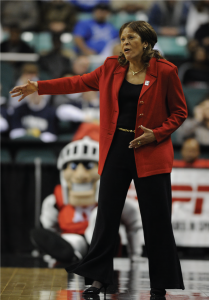
Grant Halverson/Rutgers University
If you had to win one game and could take any coach in the state, Vivian Stringer would unquestionably be among your top candidates. If you could select a coach to guide your daughter through the most important four years of her life, the Rutgers basketball legend would be a no-brainer. Coach Stringer has graced the Garden State with her presence since 1995, and during that time she has elevated the state of the game, both on and off the court. A three time Coach of the Year, she is one of only three people in women’s hoops history to win 800 games.
As it happens, EDGE Assignments Editor ZACK BURGESS has some history with his interview subject—they first crossed paths 10 years ago when he covered her Rutgers team for The New York Times. He knows as well as anyone that her triumphs have not come without their share of tragedy. She has persevered through the deaths of her father and husband, a daughter devastated by meningitis, and a son who nearly lost his life in a car crash. Some people define “grace” as the bestowing of God’s blessing. Zack pulled Vivian Stringer off the court to talk about this idea, as well as the dual challenges of being a coach and mother. And yes, he managed to sneak in an Imus question!
EDGE: Given the dramatic ups and downs and challenges in your life and career, do you feel blessed?
VS: Yes, I do. I wake up every day and witness other people’s plights, and just shake my head and wonder, ‘How do you handle it all?’ You just have to understand that when there is life, there is hope. Blessed? Yes.
EDGE: What does it mean to you to go into the Basketball Hall of Fame with Michael Jordan this year?
VS: I really haven’t allowed myself to think about it. I probably would be paralyzed if I thought about it too much. To go in with arguably the greatest class the Hall of Fame has ever seen is an honor. I have to prepare myself for the greatest day in my life, besides the birth of my children. It’s overwhelming. When I started at Cheyney State (in Philadelphia), I never believed that I would find myself receiving such a huge honor.
EDGE: How soon after you got the coaching job at Cheyney State did you know this was your calling?
VS: Are you kidding me? The minute I got there! I was just grateful they gave me a chance to coach the team. It was magical. I was 22 years old and loving every minute of it. It’s what I was meant to do.
EDGE: How do feel you did raising a family and being a college basketball coach?
VS: I did a masterful job as a parent of keeping basketball and my family separate. But now I wish I wouldn’t have kept things so separate. Those trips through the Midwest were tough. We were going from Iowa to Wisconsin. Instead of being on the team bus, I wish I had ridden right behind the bus for those six or seven hours, giving my kids more mommy time. Listening to them say mommy this, and mommy that. I was fortunate enough to have the best husband in the world.
EDGE: Where did being a coach and being a mom intersect?
VS: My son David played Division-I football. So not only do I know what it’s like to go into a home and recruit, I know what it’s like to be on the other end of the recruiting process as a parent. I know during his recruitment process I often looked for who was going to care about my son—who was going to push him to be the best that he can be, who was going to understand how special he is as a person. Ultimately, that’s what every parent wants. They want to know that their child is going to be safe and understood. I try to be the coach I would want for someone to be to my child. I want parents to understand that I am a parent, too. Parents have a right to see their child walk through your program okay, and emerge a better person at the end.
EDGE: Yet you have a reputation for being tough on your players. Is that fair?
VS: They say that I don’t get players sometime because I am known for being hard. What makes what I do any different from anyone else? Players who go to the University of Tennessee know they are going to a place where they just flat-out had better get it done. What I am trying to teach my players is to be good women. I want them to understand that when they come to Rutgers, they are not only here to play basketball, but to become young women who know how to empower themselves as well.
EDGE: Someone once told me talent and hard work always wins out. Do you believe that?
VS: I think perseverance, talent and hard work is what we should say. Thirty-eight years of doing this. I would like to think when my story is told that it’s one of perseverance, because you can have all the talent in the world—and you might even have a good work ethic—but without perseverance, none of it matters.
EDGE: What are the qualities you look for when you are recruiting a player?
VS: She has to have the will and the drive to be the best, and the skill to play the game. Someone who is not satisfied unless she is as good as she can possibly be, which means she is probably never satisfied. The more difficult something becomes, the more she sees it as an opportunity versus an obstacle. These qualities will carry her throughout the rest of her life.
EDGE: Have you ever gone against your rule and taken a player who had the skill but maybe not the drive?
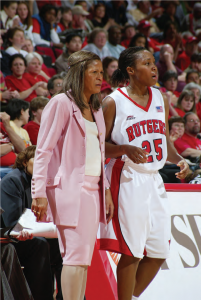
Larry Levanti/Rutgers University
VS: Sure I have. It doesn’t work.
EDGE: Getting back to the idea of grace, I have a final question. Lost in the uproar after Don Imus made those infamous remarks about your players was the fact that you were quite gracious in accepting his apology. Why was that important to you?
VS: I think we found ourselves in a situation where we needed to forgive. My faith wouldn’t have me do it any other way and I knew that. When Imus said what he said, it hit me to the bone. I’ve never been one to be able to smile and say it’s over—I really need to do a much better job—so in order for us to go forward, we just needed to forgive.
EDGE: How many of those girls are still on the team?
VS: We have four kids left from that class who are now going to be seniors.
EDGE: And how are they doing?
VS: One is going to be doctor, one a pharmacist, one wants to be lawyer and another who can do whatever she wants. To see what these young ladies went through and have them come through it with their dignity and honor intact is a wonderful thing. I’m very proud of them.
As 20th Anniversaries go, Sarah Chang’s is one of the more remarkable. She has been captivating audience since age 8, mastering some of the most challenging violin concertos with awe-inspiring passion and precision when her peers were still proud of how well they tied their shoes. Now 28, Chang’s résumé is pages long when others her age are just getting their career-defining breaks. She has enchanted audiences from Carnegie Hall to the Kennedy Center to the great concert halls of Europe and Asia. She has shared the stage with fellow luminaries from Pinchas Zukerman to Yo-Yo Ma. Chang’s CDs are best-sellers. She has even carried the Olympic torch. EDGE sent ZACK BURGESS on assignment to profile Sarah Chang. His job was to peel away the layers that typically accompany international stardom and acclaim, and get to the heart of this transplanted Jersey Girl. Sarah made it easy. Her poised and stunning facade notwithstanding, she is still a kid at heart.
EDGE: Every parent of a talented daughter dreams that their child will have the life that you do. So let’s get the obvious question out of the way. Do you ever yearn to be someone other than yourself, to slip out of your skin and into someone else’s?
SC: Maybe for a day, but not any longer than that. I love my life. I have been traveling all over the world since I was a 10-year-old. I’m 28 and have seen and done things that are just unimaginable.
EDGE: When did you request your first violin?
SC: At four. My father played the violin and I wanted to be like him—I’m a daddy’s girl, like most little girls. I was playing the piano at the time and thought it would be great to play something else. Besides, I wanted something to carry around.
EDGE: At what point did you realize that your life was going to be different?
SC: I performed with the New York Symphony Orchestra when I was only eight. I knew there was something that wasn’t normal about that. But I didn’t think I had a “gift.”
EDGE: As an adult, have you ever experienced the fearlessness you did back then?
SC: No. I was a kid. I just did it! I didn’t think about it. Of course, now, I’ve been doing it forever and this is my life, but back then I just went with it, like most kids do.
EDGE: What was it like working with older musicians?
SC: Everyone would be going to parties after a performance and here I had to go back to my room or go study. It was frustrating then but, hey, I was a kid, a teenager. Nothing is fair when you’re that age.
EDGE: So today, as a 28-year-old, what is the downside of being Sarah Chang?
SC: The travel. Sometimes I wake up and don’t know where I am, or what city I’m in. But then I remind myself of what I do, and how I get to entertain people all over the world— and that, at an age when others are just breaking into this business, I have been doing this for twenty years now. I’m already booked out to 2012, which is a great “problem” to have when you’re an artist.
EDGE: What’s your greatest obstacle as an artist?
SC: Having to be good every night, even on those days when I don’t feel well. It’s what the public expects from me and, realistically, it’s what I expect from myself.
EDGE: Which can get rather difficult.
SC: Because I’m human.
EDGE: Does it all seem surreal sometimes?
SC: Sometimes. But for the most part I’m used to it. I don’t go through this wow syndrome, where I have to pinch myself. I’ve been doing it for so long. I’m a professional. You know what I mean?
EDGE: How does dating work when you’re Sarah Chang?
 SC: It’s a challenge as a young woman on tour. It’s really hard to have a personal life when one person is in one place and the other is somewhere else. I would like to settle down someday, but I would also like to be a committed mother and wife when that happens.
SC: It’s a challenge as a young woman on tour. It’s really hard to have a personal life when one person is in one place and the other is somewhere else. I would like to settle down someday, but I would also like to be a committed mother and wife when that happens.
EDGE: When were you finally on your own?
SC: My parents stopped traveling with me when I was around 18 or 19—which presented a challenge because they were no longer there to protect me. I made my fair share of mistakes. But I’m having fun at this point in my life.
EDGE: What was life like before that, as a 13- or 14-yearold?
SC: I was just like any other teenager who thought the world owed me something. In retrospect it was no big deal. You know, here I am performing one minute and doing homework by fax for Germantown Friends and Juilliard the next. I was always struck by how much younger I was than everyone else, and that bothered me. I missed a lot of parties. But now that I’m older, in retrospect it really was no big deal.
EDGE: What do you do on days when you’re not performing?
SC: I’m just like everybody else. I’m human. I have everyday highs and lows just like everyone else. I would say I just like to have a day to myself. No cell phones, no Blackberrys, no emails. But that rarely happens. I probably wouldn’t know what to do if it did.
EDGE: Is there anything you miss about being a Jersey Girl?
SC: Of course. I miss the driving—and the space. I’m a terrible driver, so I could really use the space!
Photos courtesy of Sheila Rock/Opus 3 Artists

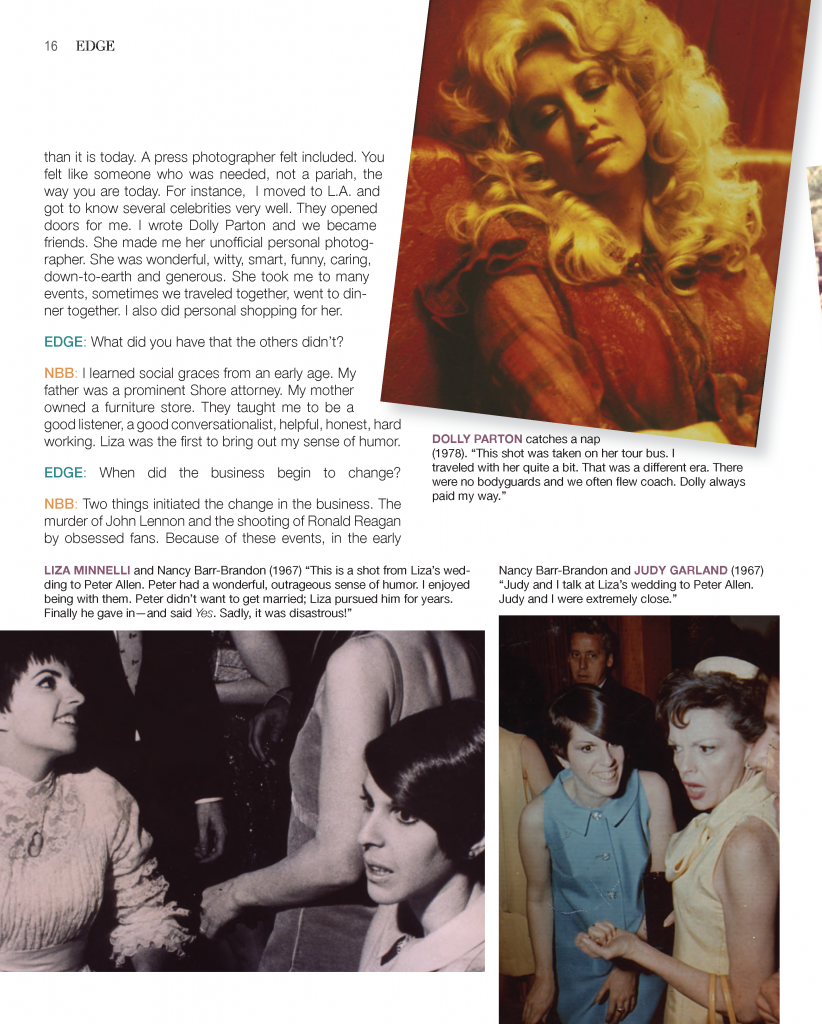
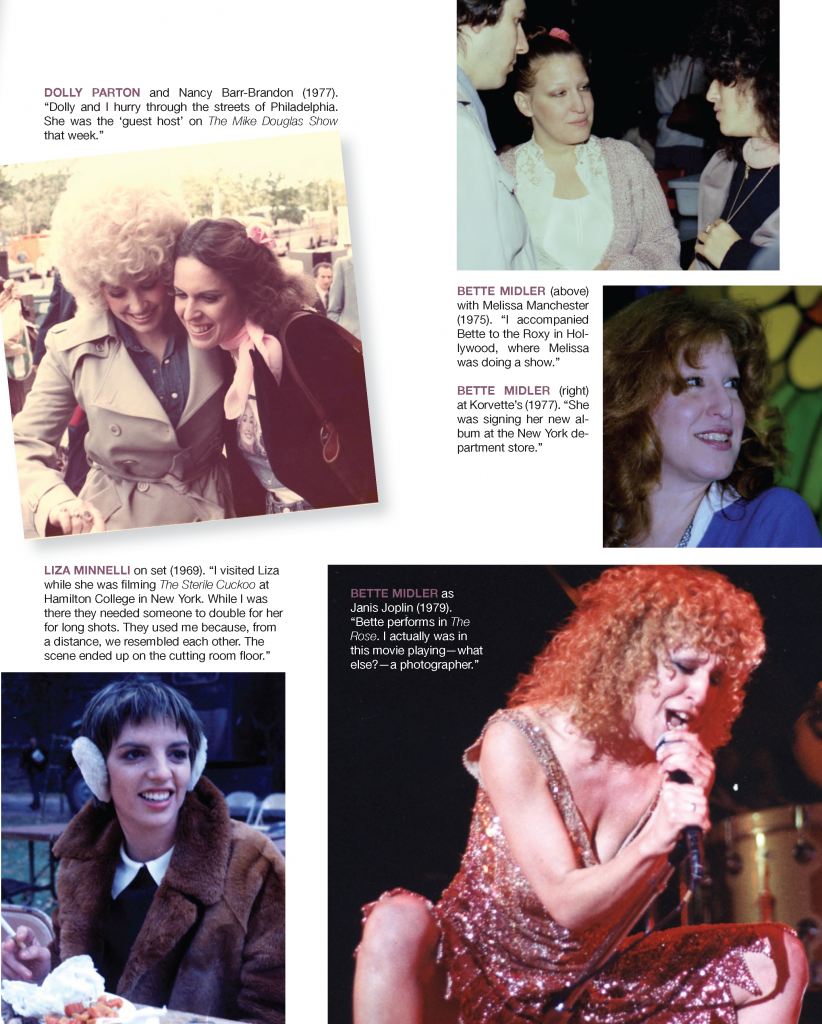

Timing is everything. NORMA KAMALI knows a thing or two about that. She shook up Madison Avenue in the 60s, put the first Pull Bikini on Christie Brinkley in the 70s, pioneered fashion video in the 80s and Internet shopping in the 90s. In 2008, Kamali launched what might just be the best-timed fashion line ever—a timelessly styled and budget- friendly collection for Wal-Mart. Her Spring 09 offerings are right on the money. Norma Kamali has always followed her own path. As this chat with EDGE confirms, she is at her best when her plate is full…and even better when it’s overflowing.
EDGE: Are you as excited about Michelle Obama as others in the fashion industry?
NK: I am. She is wearing affordable clothes. That is the best fashion statement.
EDGE: In a tough economy, sometimes you have to eliminate a couple of pricey items from your shopping list. What is the one thing a stylish consumer absolutely, positively cannot do without?
NK: If she is stylish, she really has everything, and doesn’t need anything else. However, styles at a price—and carefully chosen—can be a spirit-lifter. Anything expensive and not timeless might make you feel guilty or irresponsible.
EDGE: Last year you designed the costumes for Twyla Tharp’s ballet Rabbit and Rogue. What drew you to this project?
NK: I had worked with Twyla Tharp on a number of different productions. One being The Upper Room. Twyla came to me with the Rabbit and Rogue project as the evolution to this classic piece. The Upper Room is such a success. What drew me to this new project? It was the next wave of The Upper Room.
EDGE: What part of this production influenced you most during the conceptual process—the music, the movement, a dancer, a character?

Photo courtesy of American Ballet Theatre
NK: The concept of dark to light. The speed of the music. The type of music, film music. The music influenced the speed of the dance. Danny Elfman’s music came first and then these visual concepts. My concept for the costumes was to take the dark to light by using black, then silver, then white. I wanted to keep the color concept of silver from the beginning to the end. Brad Fields’s lighting design used the dark-to-light concept as well.
EDGE: Did Twyla coordinate your efforts?
NK: Yes. It’s a process. I would create a costume, the dancer would try it on, we’d tweak it, keep evolving it, until it worked. It’s a lot of fun, building on steps, like a painting or any creative project.
EDGE: Did you approach Rabbit and Rogue in a similar way to your runway shows and collections in terms of practicality? Drape, flexibility, breathbility, etc?
NK: Absolutely. First I figured the colors then I built on it. The way I approach something is to start, then edit and change, edit and change. The product just gets better and better that way. I would do a fitting and take photos with my IPhone. Twyla would look at them and write or call me back.
EDGE: Is designing costumes for a ballet different from designing for a musical on Broadway?
NK: I like dance a lot. It’s my preference. I’m not as excited personally with musicals or other Broadway forms. Other people do that really well. With dance I have an open palette. There’s a more creative spirit to it. It’s more fluid, less defined to a story line.
EDGE: You are a world-famous multi-tasker. What’s on your plate as 2009 starts to unfold?

Photos courtesy of Norma Kamali, Inc.
NK: Anything that relates to the new economy. I like to reinvent and think out-of-the-box.
EDGE: Can you sum up the inspiration for your Spring 09 line in a couple of words?
NK: Yes. Timeless style.
Editor’s Note: Special thanks to Leah Soltas for making this interview happen. To see Norma Kamali’s new collections log onto normakamali.com

Dolce Publishing, Inc.
Series television, almost by definition, thrives on over-the-top characters. Yet the actors who land these coveted roles often stand out by underplaying them. It’s a brave, sometimes risky choice that requires trust on the part of the audience, director and fellow actors. Sofia Milos has made a career out of earning that trust. Her relationship with the camera transcends pure physical appeal and brings depth and nuance to her roles. As EDGE Editor at Large Tracey Smith discovered, what you see on the screen with Milos is just an intriguing tease for what you get.
EDGE: The characters you’ve played tend to project a blend of feminine vulnerability and powerful independence. Is that a European thing?
SM: I think it is partly my very European upbringing, and partly my living here in America. It has brought me to what seems rare sometimes among actors. Typically, either you’re just an artist and not a businessperson, or a businessperson and not a creative person. I enjoy both sides equally. So the characters I tend to play are nuanced women where there is this great sensitivity and passion—very European—but also independent, strong and powerful women in high-ranked positions. Like Homeland Security Special Agent Bianca LaGorda in The Border, my Canadian show. Or Yelina Salas on CSI Miami, whose role changed several times over the years, from detective to undercover cop to private investigator. Or Annalisa Zucca, a mafia boss, in The Sopranos. And quite a few more strong women like that.
EDGE: You were raised in Italy, educated in Switzerland, and then moved to New York. That’s quite a combination.
SM: Yes. And I came here at a young age. I was 19 when I first hit the ground in New York. This is really the land of opportunity. You’re given a chance here no matter what race you are, no matter what gender you are. In Italy, it wasn’t like that at the time. An Italian woman? Are you kidding me? You aren’t supposed to leave the house until you’re ready to get married! Here, I was given the opportunity to find myself and explore things I liked and through that I became very empowered. That empowerment, I think, it shone through in the roles that I picked and did best with.
EDGE: In The Sopranos, you went toe-to-toe with Tony as a female mob boss.
SM: James Gandolfini. I remember him so fondly. For a man this big and so important, playing a mafia boss, he was just a big teddy bear. Truly, he made it so wonderful to work with him. Each of the three episodes that I did, I had a great time. We had some long hours—18-hours a day—and you wouldn’t feel it. I had the best time working on those scenes. I was extremely sad when I heard he had left us—and on top of that in my city, in Rome.
EDGE: How did you work with David Chase?
SM: I was so grateful to have gotten that role, and grateful for his very particular, precise, concise requests, even on how much accent he wanted (laughs) coming from an Italian. He had an exact idea of what he wanted, yet I loved the freedom he gave me. To bring in those silent moments, those silent communications—he loved it and he let me do it!
EDGE: In a way, those Sopranos episodes were a turning point for you.
SM: They changed my career. Instead of having a 70 percent male audience, I suddenly had at least a 50 percent female audience. Women were saying Thank you for that character. Women are very, very strong. They always have been. They have been suppressed by cultures, religion, marriage, fears, customs of different countries, education—but I believe they are much more courageous than their male counterparts. I’d always thought of myself as a strong person, coming to the United States alone as a teenager, tapping into that strength, going out as a warrior while holding on to my traditions. All those things came through for the first time with Annalisa, this traditional Neapolitan, who was very strong and could go toe-to-toe with a mafia boss.
EDGE: How did you prepare for that role?
SM: Tim Van Patten, the director, gave me a book called Women and the Mafia, and I loved it. These were some brilliant, brilliant women, just on the wrong side of the law. I learned the difference between La Cosa Nostra, which is the Sicilian mafia, where the women would be quiet, didn’t see anything, hear anything, don’t talk, and the Camorra, the Neapolitan mafia. If the husband dies or is incarcerated in the Camorra, they are next in rank, and they take over. So Annalisa Zucca took over. That’s what she is, her husband. That infamous scene where she goes eye-to-eye, nose-to-nose, lip-to-lip with Tony Soprano and says Bleep you, you’re gonna have to deal with me!—that was the beginning of the fire between them. If Fifty Shades of Grey had existed back then, he would’ve called me Mrs. Zucca (laughing) and I would’ve called him Mr. Soprano!
EDGE: On CSI Miami, how much of Yelina Salas was you, and how much came out of character research?
SM: It was both. Understand that when you come on board a series and sign a contract for seven years, whether it lasts or not, there has to be a big part of you in the character. You are potentially in 20 or more episodes a year. You’re an actor. You have to bring that character to life, even if it’s very far from you. But you also bring something that is yours—your mannerisms, your looks, your little ways of doing something. As far as Yelina, I think the silent and unspoken moments—having a dialogue with your eyes—that was me, very Mediterranean. I’m very grateful for the “silent dialogue” between Horatio and Yelina. People enjoyed that very much, even though CSI Miami was a very fast-paced show. You know, I think that’s a difference between European movies versus American movies. In Europe, there are brilliant silent spoken moments, but overall perhaps the writing here enables actors to work more within the dialogue. I just thank God for all the amazing writers out there. They make my job easy.
EDGE: CSI Miami ran for 10 seasons. That’s extraordinary when you think about it. The show had a lot of moving parts.
SM: It was a brilliant, topical, creative, very aesthetic, choreographed show that required a solid team—from the wardrobe, to the lighting, to the writing, to the performances. I think they did a wonderful job on the clothing. The costume designer was amazing, and at least a couple of times a month I would just ask if I could buy the Dolce & Gabanna suits that my character wore, because I loved them and they fit so perfectly. Obviously she was a well-paid detective. I loved her style. You fit the glove, Sofia (laughing) or the glove fits you!
EDGE: You mentioned European films. As a fan of the movies, if you could jump into a time machine and slip into a classic role, which would it be?

H Magazine
SM: Marriage Italian Style with Sofia Loren and Marcello Mastroianni. I thought they were brilliant together. They were the epitome of brilliance. There was so much strength in her character, Filumena—so much pain, passion, attraction, history—to me it was a very ageless role that you could relate to in so many ways, and not just because of the way it was written. I actually have played Filumena, under the guidance and study of Milton Katselas at the Beverly Hills Playhouse. We put up some pieces in our master class and one was from Marriage Italian Style. I received a standing ovation as Filumena. That role had so many facets. It’s a role that I really loved.
EDGE: Elaborate a moment on your work with Milton Katselas. His students read like a Hollywood Who’s Who— including George Clooney, Alec Baldwin, Michelle Pfeiffer, Ted Danson…
SM: I was just so fortunate and blessed to have gotten to study with the Beverly Hills Playhouse under his guidance. He squeezed a lot out of us. He really pushed us. He brought us to our knees and then up to the clouds and then to the sky. He “let us have it” so that we could have it.
EDGE: You filmed an episode of Friends before it was even on the air. Did you sense that it had the makings of a hit TV show?
SM: I knew it. I could see that it was a tight family. They were so much fun, so down-to-earth, so willing to give each other freedom. Nobody had an ego, at least when I worked there.
EDGE: How did that ensemble cast differ from The Sopranos cast?
SM: In terms of teamwork, they didn’t, actually. The same thing was true on Curb Your Enthusiasm. Of course, that was an unscripted show, so you got the freedom to bring whatever and it was appreciated. On The Sopranos— especially the ten days in Naples—the whole cast was giddy, singing Italian songs. Seriously, the shortest day was 12 hours and the longest day was 20 hours, but you didn’t feel it. It was great. I had an amazing time.
EDGE: You’re pretty comfortable with different languages and dialects. Is there one you could never quite nail?
SM: No, because I don’t give up until I have succeeded. I can be very tenacious. I am currently studying Hebrew, and you’d think it’s a very difficult language, but after having only studied for a few months, I can have a simple conversation. It doesn’t seem so hard to me.
EDGE: Could you do a Scottish accent?
SM: For you? Now? Nope! (Laughing) But I do like Scottish men!
EDGE: What do you feel defines you as an actress?
SM: When I began in this business, I decided I wanted to have a choice of what I do—and that I would always maintain my integrity. Integrity ranks higher than anything to me. It’s my way of being selfish. I won’t compromise it. My dream would be to have so many offers that I could always be a working actress, yet still have integrity in everything I do. And always feel like OMG am I getting paid to do my hobby? If you talk about freedom in this business, real freedom is the ability to have clean hands. Is it a Hollywood thing to do? Maybe not so much. But it’s a Sofia thing to do.





Christian McBride may be the hardest-working man in Jazz. The virtuoso bassist has played on nearly 300 records and has earned three Grammys for his own albums, which number more than a dozen heading into 2014. McBride learned his craft from his father (Lee Smith) and great uncle (Howard Cooper), refined it further at Juilliard, and went on to play with a who’s who of jazz luminaries, including Chick Correa, Sting, Pat Metheny, Diana Krall, David Sanborn, Joe Lovano, Joe Henderson, Freddie Hubbard, Milt Jackson, Benny Green and Ray Brown. All by age 40! McBride and his wife, jazz singer Melissa Walker, live in Montclair, where they lead the Jazz House Kids program and play starring roles at the annual Montclair Jazz Festival. Next March, he will host Jazz Meets Sports at NJPAC, an evening of music and conversation with sports superstars and jazz connoisseurs Bernie Williams and Kareem Abdul-Jabbar. Editor at Large Tracey Smith, who knows a thing or two about jazz herself, talked to McBride about the next step in his already over-the-top career.
EDGE: You’ve made a really impressive transition from in-demand sideman to bandleader. How does that journey work?
CM: As a sideman, when someone hires me for a gig, my first job is to serve the vision of that bandleader. It’s almost like being an actor—if someone calls you in for a role in a movie, you have to thrive within that role. Musicians often say they don’t want to have any limitations or work where there are guidelines. Finding your own place within these guidelines? For me that’s fun! It means I can do this but I can’t do that—or vice versa. Hmmm, let me see what I can find in here. I think that’s how I’m able to still retain my own identity while serving the bandleader.
EDGE: Talk about your work with Chick Correa and Sting.
CM: I’ve had a working relationship with Chick Correa since 1996. And every group I’ve played with him in, it’s quite surreal—he allows me to do whatever I want, do whatever I hear. He wants me to read the music he gives me, but once I get off the paper, I can do my thing! He’s really cool. He trusts me. I’m appreciative and honored by that. Sting, on the other hand, now this is how I think most bandleaders are…or at least should be. When I first started working with Sting, he was only just a little familiar with my playing. He’d heard a couple of the songs I had played on, but mostly it came from reputation. A few of the guys in the band told him if he was looking for a new bass player, then he should look at Christian McBride. When I started rehearsing with him, I realized I had to earn his trust, because we hadn’t played together before. To gain a bandleader’s trust, you must do exactly what they ask you to do—don’t step out of bounds, gain their confidence, and then when they start trusting you more and more, with each performance you get to establish more of your own identity, while serving the bandleader’s vision.
EDGE: Isn’t that still constrictive?
CM: Why would I go on Sting’s gig and start playing all my Ray Brown licks? That isn’t what’s called for. It’s about being selfless and serving the vision. After a few months of playing in his band I was able to throw in—every once in a blue moon—some of my own stuff. Sting would look over and give me a wink, or he would look over and give me a frown (laughs) depending on what lick it was.
EDGE: Now you are primarily a bandleader. Did that take some settling in?

Photo courtesy of Christian McBride
CM: Yes. It’s taken quite some time to feel comfortable being a bandleader all of the time. Over the last, I would say, five or six years, the majority of my time has been dedicated to all of my own projects, my band—Inside Straight—my trio, my big band. Before that, I kind of just dibbled and dabbled at it; most of my time was spent playing with other people, being the sideman. It wasn’t a very good balance of being able to do both. I think most people viewed my being a bandleader as something I did every once in a while, when I wasn’t busy with Pat Metheny or Chick Correa. But now the tide is starting to turn.
EDGE: Both roles demand a certain degree of, as you mentioned, selflessness.
CM: I think that would be the main thread. As a sideman, you have to realize that you are there to serve the vision of the bandleader. Too many musicians are always looking for someone to tell them how great they are, even when it’s not their gig. They somehow want to have a lot of “say so” even though they’re not the bandleader. But that’s not what it is…the greatest musicians I’ve ever been around are very selfless musicians, and as a bandleader you have to be sensitive to your sidemen or collaborators. It’s a democratic process. In order for them to help you carry out your vision, they have to be on your side. You can’t be selfish, you can’t be a mean-spirited slave-driver. That only works for a hot minute, it doesn’t work for the long run (laughs). The band will turn on you at some point.
EDGE: Who do you consider your important influences?
CM: My primary influence when it comes to composition has always been Wayne Shorter. I cannot write like him. Nobody can write like him. In terms of what he writes, and how he writes, he’s always been my number-one hero. But then, there are musicians like Duke Ellington, Oliver Nelson, Chick Correa—they have always been some of my biggest inspirations.
EDGE: When I listen to you, I hear Ray Brown with Jaco Pastorius bass lines. Who are your musical mentors?
CM: Well, those two people you just named are my top two influences of all-time. If I could somehow tell someone what my playing is based on, it would be those two guys, Ray Brown and Jaco Pastorius. Again, particularly with the electric bass, I’m not as well-balanced playing both the acoustic and electric bass, at least publically, as I once did with my old band, The Christian M Band. I would say by the end of next year or early 2015, I want to start doing some work with my fourth group, called A Christian McBride Situation, which is a pretty even balance of acoustic and electric instruments. Ray Brown, Jaco, Ron Carter, Bootsy Collins, they are all my top heroes.
EDGE: 2013 has been a busy year for you.
CM: It has. I’ve had two CD releases already—People Music, with my group Inside Straight was released in May, and my new trio’s CD, called Out Here, was released in August. I also performed at the 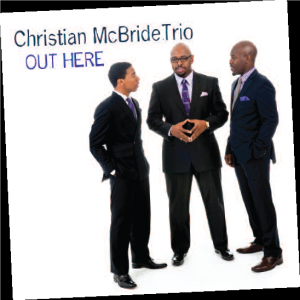 University of Maryland a piece I was commissioned to write for the Portland Art Society, The Movement Revisited. It’s a four-part suite dedicated to four major figures of the Civil Rights Movement: Rosa Parks, Malcolm X, Muhammad Ali and Dr. Martin Luther King, Jr., performed by my Big Band and Washington DC’s Heritage Signature Chorale, with spoken word selections by special guests, including civil rights activist and artist Harry Belafonte.
University of Maryland a piece I was commissioned to write for the Portland Art Society, The Movement Revisited. It’s a four-part suite dedicated to four major figures of the Civil Rights Movement: Rosa Parks, Malcolm X, Muhammad Ali and Dr. Martin Luther King, Jr., performed by my Big Band and Washington DC’s Heritage Signature Chorale, with spoken word selections by special guests, including civil rights activist and artist Harry Belafonte.
EDGE: The digital age has certainly changed the recording industry landscape. How has the Internet changed things for you?
CM: It’s been like the Wild Wild West. It’s definitely a new frontier for everyone in the music industry. I think we’re still trying to plant our feet to try to get some stability. It seems like it is affecting everyone across the board, not just jazz musicians. One could argue that it is leveling the playing field, but I think that is only half-true, because what is happening now is that people are crafty and they are finding ways to get around paying for music. That’s not good on any level, because artists have to make a living. I don’t know how we can somehow change the thinking of Americans. I really feel it’s only an American problem, because people have no problem paying for music anywhere else in the world—even people who don’t have a lot of means. They realize the importance of art, but it seems like here it’s, “Why should we pay for music? All these guys are millionaires anyway!” Someone always has this knee-jerk reaction that all musicians are millionaires, or we don’t need the money, or what we do is not really an occupation, it’s a hobby.
EDGE: Who’s on your playlist when you are listening for pleasure?
CM: I really don’t do as much recreational listening anymore. I’m working on so many different projects, that most of my listening is dedicated to that. But James Brown usually dominates any of my musical devices. And there is always plenty of Cannonball Adderley, Ray Brown with Oscar Peterson, plenty of Quincy Jones—especially during his big band stuff. Those are always going to be in my player.
New Jersey has been good to Terence Winter. The Garden State furnished him with the inspiration and settings for two of the most iconic series in television history. Winter was a writer and executive producer for The Sopranos, and the creator of Boardwalk Empire. The Brooklyn born ex-lawyer sat down with EDGE Editor at Large Tracey Smith to talk about the two shows and their protagonists, reveal a nugget or two about the upcoming Boardwalk Empire season, and his upcoming film, The Wolf of Wall Street. What’s the key to writing a great series about crooks? Honesty…what else?
EDGE: Explain how you were able to transition so easily from The Sopranos to Boardwalk Empire?
TW: It might have looked easy but it wasn’t. There was a lot of research involved for Boardwalk that I didn’t need to do on The Sopranos. For example, on The Sopranos, because it was contemporary, I didn’t need to look up pop culture references, I knew the way people spoke, acted, and dressed. For the 1920s, it’s a whole different ball game. I needed to learn about World War I, I needed to learn about the Temperance Movement, I needed to learn about the year women got the right to vote—I needed to put myself in the mindset of characters who were born in the 19th century. So colloquialisms, what books did they read, what movies were out then required months and months of research before I was even able to begin to write the pilot. So even though they are a similar genre, and the characters cover some of the same territory psychologically, it’s almost a hundred years earlier, so the prep work was massive.
EDGE: One of the first things Tony said on The Sopranos was that he felt like he was coming in on the end of something. Steve Buscemi’s character in Boardwalk Empire, Nucky Thompson, is right there at the start of something.
TW: Right. Prohibition was the single event that made organized crime possible. That, more than anything else, was the impetus for criminals to start working together to make money. The interstate trafficking of alcohol made millionaires of criminals overnight, and enabled them to then infiltrate other businesses, and ultimately become organized throughout the country.
EDGE: How do Nucky and Tony compare as protagonists?
TW: In terms of their psychology, they both at their heart are depressed people, sort of searching for something that will make them happy. They are both very smart, both natural leaders, and both are ruthless. Tony’s fatal flaw is that he has a conscience. If he were more of a true sociopath, he wouldn’t pass out, wouldn’t have panic attacks, and wouldn’t care. Nucky, I think, is the same way. We’ve explored a little bit of the psychology of Nucky. We learn by the end of the first season that his wife lost a child very early on, and he is still haunted by that, and that he had a difficult relationship with his father. He’s trying to repair a broken childhood and to recreate a happy family life that he can’t quite seem to replicate.
EDGE: How did Steve become your Nucky?
TW: I’ve been a fan of Steve’s since a movie he did in the 90s called In the Soup. The moment I saw him I was just fascinated with this guy. I was lucky enough to get to know him when he directed a few episodes of The Sopranos that I wrote, and we became friends. Then, of course I got to work with him as an actor when he portrayed Tony’s cousin. I’ve seen everything that Steve’s ever done as an actor. I’ve seen him portray every possible color of human emotion, back and forth, every which way. So for me there was never a question of whether or not he could be convincing as Nucky. When we started to cast for the show, Martin Scorsese and I were talking about who is going to play the lead role. Our Nucky is based on a real person, Nucky Johnson. We fictionalized him as Nucky Thompson, so he’s a version of that person. But we realized since nobody really knew what the real Nucky looked like anyway, it didn’t really matter who we cast in terms of whether or not they looked similar. So Marty said, “Well, let’s just pick an actor that we both like. Who are people you want to work with?” I’m pretty sure it was me that said, “What about Steve Buscemi?” He jumped on it and said, “Oh my God, I love him.” About a week later, Marty called me up and said, “I can’t stop thinking about Steve Buscemi.” I told him I couldn’t either, and he said, “Let’s do it.” HBO was on board—their feeling was Wow, what an interesting choice. That was it. We were off to the races.
EDGE: Why didn’t you use Nucky’s real surname?
TW: I wanted the opportunity to take my Nucky into places where the real Nucky might not have gone. For example, I’m pretty certain the real Nucky didn’t kill anybody. I’m pretty certain he didn’t embrace gangsterism the way our Nucky does. Fictionalizing him gave me artistic latitude and allowed me to sleep at night.
EDGE: How difficult is it to develop so many characters simultaneously?
TW: It’s a massive juggling act. There’s a lot of plotting out, there’s a lot of characters on the show, we’ve got action taking place in several different cities—it’s a big, big, chessboard of characters. That’s the work that goes on in the Writer’s Room. It all starts with “What if?” If suchand- such happened, what would the result of that be? What’s the fallout from that? Where do we want to end up? I’ll come into the season and have a pretty good idea of where I want things to end by episode twelve, sort of like a roadmap. We’re gonna drive from New York to California—alright, well, how do we get there? Those are the story beats that bring us to various places, and it takes a lot of sitting around the table and talking and banging your head against the wall, and plotting, and figuring it out. Eventually, it all works, but it’s a big, big, juggling act.
EDGE: And now you have two new characters to blend in.
TW: Yes. Jeffrey Wright plays a character this season called Valentin Narcisse. He is a Doctor of Divinity who also happens to be the most powerful gangster in Harlem. He crosses paths with Nucky and Chalky in Atlantic City, and that is about as much as I can tell you at this point. If you know anything about Jeffrey and his work, he’s a phenomenal actor, just incredible. We were so thrilled to be able to work with him and have him on the show. The same with Ron Livingston. I’ve been a fan of Ron’s for years and years. He’s so versatile. His work on Band of Brothers, Office Space—I mean, he’s one of these actors that can do comedy, drama, anything in between. He becomes an acquaintance of Jillian Darmody’s, and has a really interesting storyline as well. I’m really excited about both of those guys.
EDGE: A lot of people were shocked when you killed off Jimmy Darmody at the end of season two, just as they were when Tony killed Christopher in The Sopranos. What’s involved in the decision that a major character has to go, especially a protégé?
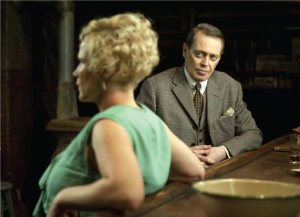
Photo courtesy of HBO
TW: First and foremost, I try to write the show truthfully. I try to avoid making decisions based on what would be the popular choice, what the audience would want me to do, what the conventions of television would be, which is: You don’t kill your second lead on the show, a beloved character. As season two was playing out, it became really clear to me that if we were going to tell this story honestly, Nucky would kill this guy…and he would kill him immediately. If I were watching this and he at the last minute changed his mind and Jimmy got off with a stern reprimand, I’d say, “This is not true, this is a TV show!”
EDGE: It is a TV show.
TW: But I want it to feel real. I think over 60 or 70 years of TV history, we’ve sort of lulled our audience into a sense of complacency. People say, “Oh, well, they’re obviously not gonna kill this guy, I know it looks like they are, but they won’t, because he’s one of the stars of the show. So, of course, people couldn’t believe when we did it, which made me even more certain I’d made the right decision. The louder the uproar, the louder the outcry, the more I was convinced we did the right thing.
EDGE: You have some interesting projects coming up with Leonardo di Caprio, Martin Scorsese and Bobby Cannavale.
TW: In November, Wolf of Wall Street opens. That’s, as you said, directed by Martin Scorsese and stars Leonardo di Caprio. It’s the true story of a stockbroker named Jordan Belfort who, in the 90’s, made tens of millions of dollars a year as the head of his own stockbrokerage firm. He found a way to sell very inexpensive stocks to rich people. He sort of cracked the code, and he and hundreds of young brokers working for him made a fortune. It was just an incredible roller coaster, a wild ride with incredible amounts of money and drugs. Leo is terrific in it and, of course, we’ve got the master, Martin Scorsese, directing. I’m also working on another series with Martin Scorsese for HBO, this one involving Mick Jagger. It’s set in the world of rock music in 1973 New York City, starring Bobby Cannavale as a cocaine-fueled, A&R executive for a record company. That was the year that punk, disco and hip hop were all invented in and around New York City, a time of great change, of great upheaval in the city. I’m really, really excited about that project. Hopefully, the pilot will be directed in the early part of next year, and we’ll go into series right after that.
EDGE: Cannavale was like a bull in a china shop on Boardwalk Empire.
TW: Oh yeah! There was nobody better to play the Gyp Rossetti role than Bobby. He was great. I think we had one conversation about who that character is and what motivated him, and Bobby got it immediately and ran with it and became Gyp Rosetti. It’s so funny, because nothing could be further from the real guy. Bobby is just the sweetest, funniest, most gentle person in real life, and as an actor he can sort of give you anything. He can turn into Gyp Rosetti on a dime and then go back to being himself again—it was pretty amazing to watch.
EDGE: How many more seasons?
TW: I would love to do seven seasons all together. We’re starting down the homestretch in season four; whether or not we’re fortunate enough to get to do them remains to be seen. It all really is going to depend on what the public’s appetite is for this show, and HBO’s, of course. I would love to do three more years, I think that could take us to the point in Nucky’s story, and the point in history that I’d like to get us to. Hopefully, we’ll get the chance to do that.
EDGE: Are you a nostalgic person?
TW: Very much so. I love history. I am the family’s historian. I’m the one who archived all of the family photos and films, the genealogy and all that stuff. I love the idea of leaving that behind for my children, and grandchildren, and their children. I’d give my left arm just to read about what my great-great-grandfather’s day was like. “What did you do, where did you go, who did you talk to?” That stuff is fascinating to me.
Editor’s Note: There are no short conversations once Tracey Smith gets you talking. For (a lot) more on Nucky, Chalky, Margaret, Richard and Van Alden—and the inside story on the brilliant “Pine Barrens” episode of The Sopranos—visit edgemagonline.com and read the rest of our Q&A with Terence Winter.
When Hollywood needs a go-to country, it goes to Morocco
 Here come the choppers. Swirling into Mogadishu. Smoke, dust and sand fill the screen. Swarms of half-naked kids race past adobe buildings that explode into flames and deadly debris. Somalia never looked more hellish. The American Rangers never looked more battle-ready. It’s Blackhawk Down—based, of course, on actual events and directed by Ridley Scott, who is mighty pleased with his blockbuster film. Dramatically a winner, financially a dreamboat that, reportedly, earned its investors “ten bucks on the dime.” And filmed On Location. Switch to Lebanon’s land-mined desert. Leonardo DiCaprio, hands aloft in surrender, must outfox both the ill-advised CIA as well as the local terrorists.
Here come the choppers. Swirling into Mogadishu. Smoke, dust and sand fill the screen. Swarms of half-naked kids race past adobe buildings that explode into flames and deadly debris. Somalia never looked more hellish. The American Rangers never looked more battle-ready. It’s Blackhawk Down—based, of course, on actual events and directed by Ridley Scott, who is mighty pleased with his blockbuster film. Dramatically a winner, financially a dreamboat that, reportedly, earned its investors “ten bucks on the dime.” And filmed On Location. Switch to Lebanon’s land-mined desert. Leonardo DiCaprio, hands aloft in surrender, must outfox both the ill-advised CIA as well as the local terrorists.
It’s Body of Lies and we don’t have to worry about Leo’s ultimate success. It’s never in doubt. Also filmed On Location. On a less hair-raising note, let’s zoom in on Sarah Jessica Parker who, as Carrie Bradshaw, sits quaffing champagne, flanked by her faithful trio of gal-pals. She’s draped in radiant silks, legs akimbo, on a priceless oriental rug in the deepest recesses of the Shah’s palace in Saudi Arabia. Precise location? Undisclosed for security concerns. Again, filmed On Location. And let’s not overlook those intrepid swashbucklers: Sean Connery, Christopher Plummer and Michael Caine. Resplendent in Her Majesty’s gold braided, brassbuttoned Imperial uniforms, braving the blizzards of India’s Himalayan heights. It’s India-profound.
The British Empire is in full flower. The Man Who Would Be King, first conceived by that old imperialist himself, Rudyard Kipling, whose saber-rattling novel was lovingly transposed into film by John Huston. And, yes, filmed On Location. On Location. Magic words. They convey authenticity and sky-high budgets. They conjure up drama, adventure, exotica and romance with a capital R. Somalia, Lebanon, Saudi Arabia, India. No expense spared. And who stops to ask, “Yes, but what location?” The answer lurks in the rapidly rolling credits, just before the screen goes blank. Just before the lights come up and you’re reaching for your hat, the car keys and those missed messages on your cell phone. Or pushing the little square button on the remote. So no wonder you missed that split-second phrase that so graciously thanks King Hassan II or, more recently, King Mohammed VI and the People of Morocco. This is one of the film industry’s best-kept secrets, a secret that delights directors and accountants and—Surprise! Surprise!—delights even the pampered stars of stage and screen, who do not take kindly to life in the rough. Everyone who is anyone in the film industry, it seems, knows full well the advantages of shooting a film in Morocco.
Fooling the Camera For starters, there’s the easy accessibility to every kind of scenery. Snow-crested mountain peaks in the Atlas Mountains. Endless vistas of sandy shorelines, both Atlantic and Mediterranean. Boulder-studded canyons like Glaoui Kasbah, Ait Benhaddou Kasbah, and Valley of the Nomads. Cascading waterfalls, rushing rivers, tranquil lakes and infinities of golden Saharan sands. Remember that scene in The English Patient? There is Ralph Fiennes, the love-stricken English-speaking Hungarian spy. He has settled his wounded amour, Kristin Scott Thomas, the seductive Katharine, in the depths of an Egyptian cave far out in the Sahara. She’s gravely wounded. One last, long embrace. As defense against the inevitable dark, she has only a faltering flashlight and a tattered copy of Herodotus.
Off he sets across the endless desert sands seeking help. We see him silhouetted on the far horizon, staggering, parched, heat stricken, doomed. All around the desert folds and unfolds into time without end. A nine-Oscar triumph! But forget all that about Egypt. From start to finish it was made not in Egypt, but a thousand miles to the west, in Morocco. Another smash hit filmed On Location It’s not just that Morocco can provide lookalike landscapes that easily pass for the Australian outback, a Hopi reservation, the jungles of the Amazon or the icy passes of the winter-bound Ural Mountains. Have you even an inkling how many scores of films are made every year based on the Bible, the Torah or the Quran? Morocco has every holy answer from the Temple of the Pharisees to the stable of the nativity. And if you’re a filmmaker with a tight shooting schedule and a dicey budget, it does not hurt one whit that Morocco can truthfully claim 360 days a year of unpolluted sunshine.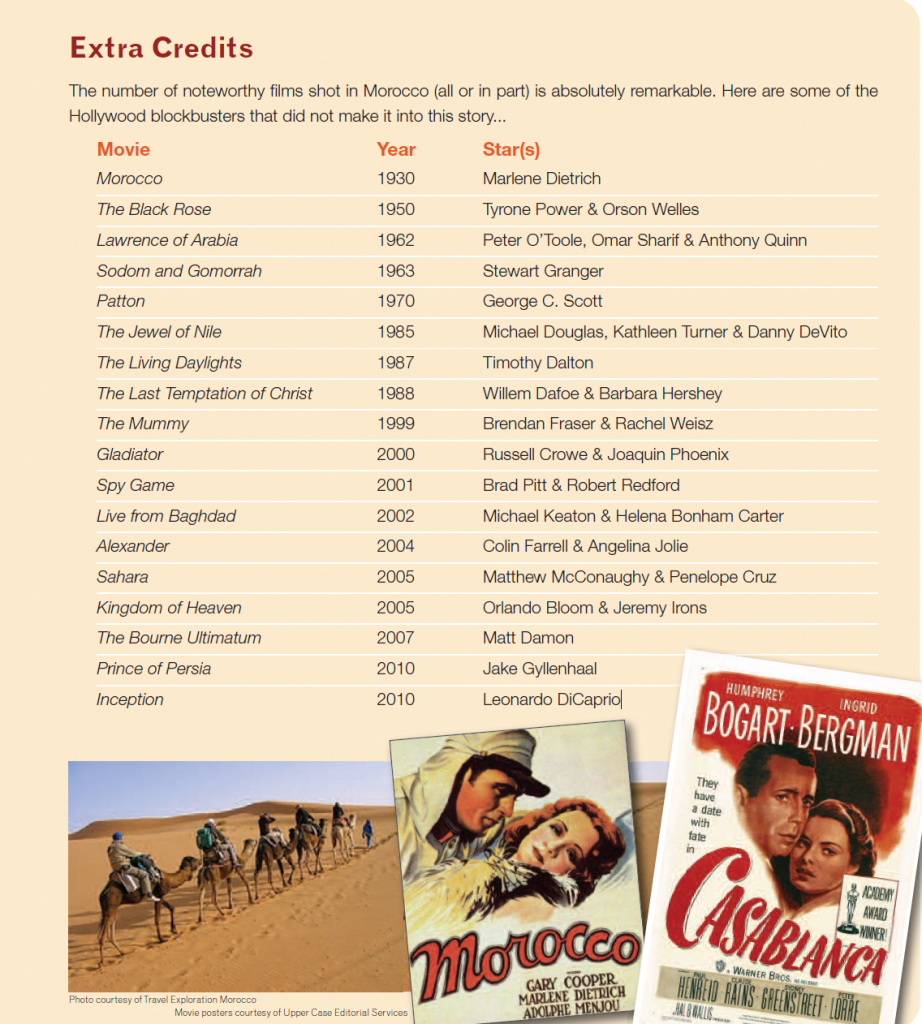
A Nation of Extras The silver screen’s love affair with the country dates back to 1897, when that French film pioneer, Louis Lumière took his camera crew there to film Le Chevalier Marocain (The Moroccan Knight). Orson Welles chose Morocco as the setting for his filmed version of Shakespeare’s Othello. Alfred Hitchcock made The Man Who Knew Too Much in the lush city of Marrakech, Morocco’s mecca for luxury lovers, be they movie moguls or run-of-the-mill zillionaires. Not surprisingly, so many decades of movie making has worked a kind of mutation on the DNA of the people of Morocco. It seems as if every man, woman and child has worked as an extra (a delightful gimmick for supplementing a daily wage). When Martin Scorsese on a morning needed a huge crowd of palm-waving devotees to welcome the Saviour into Jerusalem in The Last Temptation of Christ, the crowd was easily whistled up on minimum notice.
He could have had his crowd barefoot or sandal-clad. Or a bit of both. Everyone arrived authentically garbed in robes lifted right out of the Gospels. When, that very afternoon, the schedule called for a mob of enraged citizenry shrieking for a crucifixion, the morning crowd had no trouble “switching allegiance.” Strikingly handsome Tahar Najoui, 40-ish, who works for Travel Exploration Morocco as an expert van driver, delights in transporting tourists, film crews and movie stars to every corner of his native land. He modestly admits to acting as an extra in “more films than I can count.” The maid who tidies your room in the Berber Palace Hotel has probably played in half a dozen filmed street scenes. Her kids have happily passed for street urchins in ancient Rome or child soldiers in some Central African civil war. Your bus driver probably marched with Alexander the Great or stormed the ramparts of a 12th century fortress. Casting epic films on location in Morocco is the least of a director’s worries.
French Connection The French, who for many years affectionately called Morocco their Protectorate, have long since pulled up colonial stakes and retreated back to chez-eux. But as is so often the case, their legacy is very much in evidence. The engineering marvel of incredible road networks that join sea to mountain to desert was actually built by the French Foreign Legion—once everywhere in evidence, but today a discreetly diminished presence. Arabic and Berber are Morocco’s first languages, but French is widely spoken; English, in no small measure thanks to the film industry, is coming on with lightning speed. The legacy of the French is seen in other subtle ways: The windows of the pastry shops in Fez, Rabat or Casablanca could pass for patisseries in the Rue de Rivolli or the Plâce Vendôme.
The women of Morocco, bareheaded or partially veiled, move with a feather-footed grace that typifies the Paris pedestrians. Where else in North Africa can one walk the streets unhassled, confident that the crowd in the bazaar or the souk will not suddenly turn into a mob of hostage-takers intent on flag-burning or a game of effigy hangman? In addition to great roads and a predisposition for street chic, the French also left their Catholicism, which mixes painlessly with Islam and Judaism. It’s an easy blending that conveys a very European feel to the whole country. Morocco manages to balance delicately as part-Islamic, part-Christian, part-Catholic, part-Protestant. Many (but not all) women wear head scarves but the top-to-toe burqa is an oddity. Women are welcome to drive cars, attend university and marry as they please. Secularity has the upper hand in Morocco which, alone among North African nations, is quietly funding a well-organized push to join the European Union.
Government Blessings Sunshine and incredible scenery are only part of the answer as to why movies and Morocco are such a good fit. Take a look at the coastline of North Africa. Traveling east to west, from Egypt to Libya to Tunisia, Algeria and finally Morocco. In every country political unrest, riots, arson, roadblocks and civil upheavals are daily fare. Morocco alone remains serene. By the same token, why subject Emily Blunt and Ewan McGregor to the indignities of the streets of Yemen when Morocco affords Yeman-y landscapes as good as (or even better than) the real thing? If you caught Salmon Fishing in the Yemen when it hit theaters, once again, you were on location in Morocco. “We are,” as a well-known guide pridefully told a bus full of Japanese tourists, “the Safest Door to the Desert.” With a keen nose for profit, the Moroccan government has gone overboard to eliminate red tape for movie-makers. No nasty tie-ups there about film permits. Applications are approved within 24 hours at pleasingly competitive prices, especially as compared to Europe or North America.
Furthermore, from the Mediterranean in the north of Morocco to the Sahara in the south, filmmakers can count on ready access to state-of-the-art camera equipment, experienced sound and lighting crews and catering services that will provide soufflé au chocolat, perfectly ripe Camembert or chilled to perfection Moet et Chandon—even in the far reaches of the Moroccan Sahara. No need to transport all that equipment or all those technicians from California. It’s already right there in Morocco, and available at prices that undercut all competitors. Cate Blanchett first visited Morocco when she traveled there to star in Babel. The film was a huge box office success. Whether it was the success of the film or the appeal of the country, who’s to say? But rumor has it that Australian-born Blanchett and her husband, Andrew Upton—who together act as co-directors of the Sydney Theatre Company—are now interested in setting up a similar theatrical company, probably in southern Morocco. True? Absurd? Who’s to say? But certainly for now, it’s safe to say that there will be plenty more films…as distinct from one another as Sex and the City and Saint Joan, lining up to be produced in Morocco…aka “The Other Hollywood” or, as we say in the trade, On Location.
Fate is a cruel mistress, especially in the entertainment industry. Reaching the top, even for a moment, is a longshot at best. Staying on top is a near impossibility. In the world of rap music, this is especially true. Which is what makes Curtis Jackson, better known as 50 Cent, someone worth talking to. He has used his top-selling albums as a springboard to do well in a number of other businesses—consumer electronics, energy drinks, boxing promotion and movie-making, to name four—and more importantly, to do a lot of good. EDGE’s Tetiana Anderson connected with 50 Cent at a technology trade show in Berlin, where he was promoting SMS Audio’s newest headphones. In a wide-ranging Q&A, she discovered a three-dimensional thinker with the drive and vision to redefine what a celebrity can (and should) be.
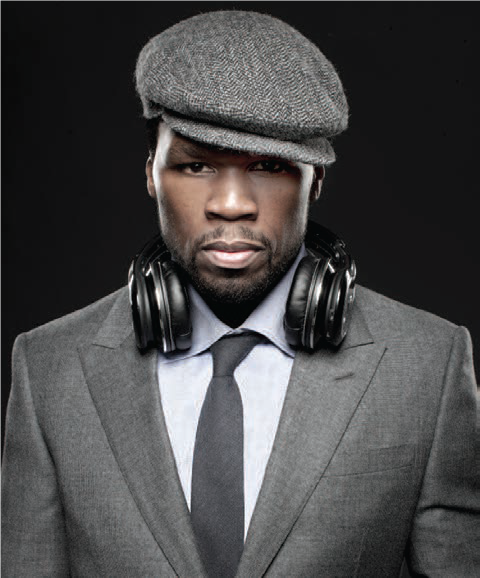 EDGE: Why is diversifying into multiple forms of entertainment so important for you?
EDGE: Why is diversifying into multiple forms of entertainment so important for you?
50 CENT: The artist community can create a negative energy for you. My first record, Get Rich or Die Tryin’ was the largest debuting hip-hop album. I went on to sell 13 million records. Later in my career, people compared me to that first impression I made, and you don’t get a second chance at a first impression. In order to allow me to explore my passion for music, I moved away from it, gave myself other projects to be involved in. This is why there is such diversification of the portfolio of the things that generate an income. It secures the freedom to do things creatively as I please.
EDGE: You had two movies out in 2012—Freelancers and All Things Fall Apart. In All Things Fall Apart you dropped 60 pounds to play a college football star dying of cancer. How did you prepare for such a huge personal commitment?
50 CENT: I had all the emotions necessary for it ’cause I lost my best friend growing up under those circumstances. That was why I committed to a project that would take so much physical discipline. The scene where I’m on the bed with Lynn Whitefield and I actually start crying, my friend said the same words to me. He said, “Why is this happening to me? I haven’t done anything wrong.” Interestingly, everything that he was saying he didn’t do was something I did—a mistake I made in my past.
EDGE: How so?
50 CENT: When my mother got killed, I moved to my grandmother’s house as the new ninth child. We lived on my grandfather’s income, so there was not a lot of finances around. You kind of got things when someone was done with them. I was given a special want for nice things from my experience with my mom—everyone that I’d seen that had something nice was from her life. They had nice cars, jewelry, beautiful women around. It’s pretty tough to suppress that want for instant gratification when you see people that have things…and when you don’t have someone to say, “You go that route, you’re gonna have a bad outcome.”
EDGE: So to get those things you turned to selling drugs?
50 CENT: My mom’s involvement in it kind of gave me birthrights. There are no requirements, there’s no specific level of education you have to have.
EDGE: Getting back to the movie, you actually financed the project.
50 CENT: I look at money like it’s freedom. It gives me the ability to better myself and to go after my ideas, like SMS Audio. You’ll see a lot of other talent sign licensing agreements with companies and receive an advance on the royalties of sales of products with their likeness. I invested in it. I own this company, so it’s a huge difference between what you’ll see from those other artists and what you’ll see from me.
EDGE: SMS Audio donates a portion of sales proceeds to Feeding America and SK Shot—your energy drink company—does the same thing to help feed hungry children in Africa, while creating entrepreneurial opportunities for people there. Do you feel others in the rap industry are doing a good job of giving back?
50 CENT: You know, the traditional way of giving back, we gotta modify it. Most rappers that have some success have organizations that they put together in their names, but those things are being done for tax purposes. When you reach a certain level of success, you start to be  interested in what your legacy is. The people who resonate the strongest are those people who consistently helped others. In terms of what SK Shot does, traveling the last time in Africa it was unbelievable. The numbers are astronomical. You wouldn’t even believe that that many people die from not having something to eat—and meanwhile we choose what we’re gonna eat, and throw away what we’re not.
interested in what your legacy is. The people who resonate the strongest are those people who consistently helped others. In terms of what SK Shot does, traveling the last time in Africa it was unbelievable. The numbers are astronomical. You wouldn’t even believe that that many people die from not having something to eat—and meanwhile we choose what we’re gonna eat, and throw away what we’re not.
EDGE: How does that affect you?
50 CENT: When you get to a certain point you become more interested in philanthropy. You start to look at who you are. You start asking yourself what’s really important to you. It’s not an actual dollar amount. It’s about your happiness.
EDGE: How have you incorporated that philosophy into your businesses?
50 CENT: You create a model. When you see people in the park on Occupy Wall Street or Occupy LA and Chicago and all, it’s clear that they feel the major corporations don’t care about people, period. But if they adopt models like SMS Audio or like the SK model— where every product that is sold provides for someone in need—it says they’re conscious. To promote conscious capitalism is the way we actually find the finances for social change. There’s no other place that I see enough money.
EDGE: Is that something that is missing in the hip-hop industry?
50 CENT: Well, because a lot of talent comes from not having very much, it’s about living life on the highest level possible. Overall, within hip-hop, we haven’t had people get to where they’ve actually stopped being conscious of having more than someone else and say, Am I actually comfortable? Am I happy? What do I want? If you ask a person what defines their life, and they offer the answer I’m gonna make a billion dollars, I’m gonna be a billionaire, that would be pretty vain, wouldn’t it? But if you ask someone who is completely content with their financial space and conscious of their surroundings What defines your life? they’re probably going to say their loved ones. We get tunnel vision. We’re ambitious. We move from one goal to the next goal to accomplish the next thing and the next thing. I could easily be mistaken for a workaholic, but I exercise that “Whistle While You Work” concept. I’m enjoying myself. This is what I am supposed to be doing.
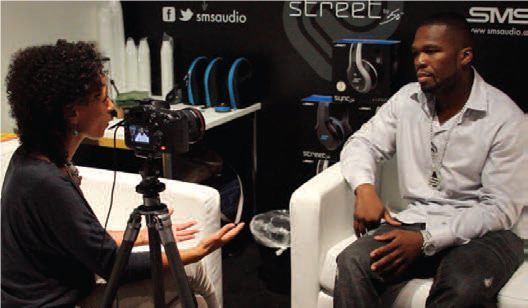 EDGE: Yet, there are tremendous stresses that come with succeeding in your industry—including pressures to stay on top, to make money to remain relevant.
EDGE: Yet, there are tremendous stresses that come with succeeding in your industry—including pressures to stay on top, to make money to remain relevant.
50 CENT: There’s a level of confidence required to be yourself enough to create a separation. You’ve got to understand the history of music and entertainment. You build entertainers to destroy entertainers, for the sake of entertainment. The way around the destruction process is having something to fall back on. That allows me to do what I actually feel like is the hottest material right now. Otherwise, I would pull my hair out trying to second-guess what someone else is going to think or feel.
EDGE: You branched out into boxing promotion this summer with TMT (The Money Team). Where would you like to take professional boxing, which now gets stiff competition from mixed martial arts?
50 CENT: Doing the research, 56 percent of UFC’s (Ultimate Fighting Challenge) demo is 18 to 34. With boxing it’s 30 and up. I think professional boxing lacks what the UFC has. So, to bring youth culture, maybe you need to bring the theatrics you see at a WWE event into professional boxing. You have to pay attention to the successful models that people have utilized elsewhere in order to make minor changes to the natural sport of boxing.
EDGE: Can Atlantic City reclaim its status as a Mecca for professional boxing?
50 CENT: Absolutely! Between Atlantic City and New York City, I’d be looking forward to put on shows in those areas.
EDGE: If you had a choice between your next record going platinum or developing one of your fighters into a heavyweight champ, which would you choose?
50 CENT: My record. I have a stronger passion for music than anything. I love having the ability to be a part of the other businesses, but I remember they came by way of music. If I didn’t have the finances or the popularity from my music, I wouldn’t be able to be a part of those projects.
All photos courtesy of SMS Audio.
Editor’s Note: If Tetiana Anderson’s name sounds familiar, you may have read her interview with Roberta Flack earlier this year in EDGE—or seen her face and heard her voice on television. She’s chased storms for the Weather Channel, covered Operation Iraqi Freedom for MSNBC from Baghdad and is currently a freelance reporter/producer for organizations including NY-1 and CNN. A journalism fellowship recently took her to Berlin, where she crossed paths with 50 Cent at an SMS Audio media event.
In the opening moments of Goodfellas, a murderous threesome played by Robert DeNiro, Joe Pesci and Ray Liotta struggles to dispose of made-man Billy Batts. It’s the beginning of the end for these characters, but for actor Frank Vincent, the part of Billy helped catapult him to iconic status. As “Shovel Ready” roles go, one might say this was the capo di tutti capi. EDGE Editor-at-Large Tracey Smith has made a study of the mob movie over the last year or so. Through her interviews, she has uncovered a rich tradition of storytelling, a dynamic passion for filmmaking, and a core of actors who care deeply about their craft. Frank fits this mold as well as anyone in the business. An accomplished performer long before he made his screen debut, he is always looking beyond the camera and over the horizon.
EDGE: You’ve delivered several indelible performances as a New York mobster, including Billy Batts in Goodfellas and Phil Leotardo in The Sopranos. But for the record, you’re a Jersey Guy.
FV: I couldn’t think of myself as anything else, even though I wasn’t born here. Of course, I know New York well. I’ve done a lot of New York movies and know all the boroughs. But I’m a Jersey guy. I’m proud to be from Jersey. I think it suits me.
EDGE: When did you move to the state? My father’s family came to America and settled in North Adams, Massachusetts. I was born in Massachusetts and so was one brother. My second brother was born in New Jersey. My father’s friend had a girlfriend in New Jersey, and he (my father) went out with them one time and met my mother, who was from Jersey City. They wound up getting married and eventually we moved back there.
EDGE: Who were your role models growing up?
FV: Like most men, my biggest influence was my father He was a very charismatic man—uneducated but very smart and hardworking. A great work ethic. He was the guiding light in my life. I loved my mother, but she was more of the disciplinarian in the family; my father was my idol. When I was a little boy I would watch him getting dressed in front of the mirror. He was a flashy guy, he loved to groom, his hair was always impeccable He wore Old Spice cologne and had a pencil-thin mustache. He saw himself as kind of an Errol Flynn type. My mother dressed nicely, too—when they dressed up, they dressed up. My brothers are the same way.
EDGE: Before acting there was a career for you in music. Was that your father’s influence?
FV: I think that actually started with my mother. I would come home from school for lunch and she always had music playing in the house. We would sit together and eat and listen to the radio. That implanted a love of music in my head. My father thought of himself as a singer, but he didn’t really have the ability—I think he was tone deaf. Yet he had the moxie to do it in front of people. Anyway, when I told my parents I liked music they made me take piano lessons, which I did not like because it took me away from the kids in the street. The Jersey City Department of Recreation had a drum and bugle corps, and I joined. I wound up being a bugler because I had taken some trumpet lessons. Many of my friends went on to become cops, fireman or went to jail, because it was a pretty rough neighborhood. But I stayed with the guys that played music. I finally ended up joining the St. Joseph’s Cadets from Newark. I traveled the country with them, and we were national champions. Competing in front of 70,000 people at Yankee Stadium as a 14-year-old gave me the confidence to go further. I was never afraid of an audience.
EDGE: How did you end up with your own band, playing the drums?
FV: I bought a set of drums for $100, auditioned for a band and got the job. Now all of a sudden I’m in show business! We were Bobby Blue and the Aristocats. We played in a lot of top clubs here and in the city. We were good. We were well-dressed. We were the real deal. One of the guys worked as an arranger for Frank Sinatra. Eventually I took over the band, and over the course of time we became a trio, Frank Vincent and the Aristocats. Between dates, I was in and out of New York sometimes four or five times a week working in recording sessions— backing up artists, working on albums, playing jingles. A record producer named Bill Ramal got me into that part of the business. He worked with Del Shannon, Dion and the Belmonts, Steve and Edie, and Paul Anka.
EDGE: What happened with the trio?
FV: Well, my piano player left me in 1969. That summer I hired a young guitar player who used to come to our club dates and occasionally sit in with us and sing. Our first gig was July 4th at the VIP Lounge in Seaside Heights. We ended up being the toast of the Jersey Shore that summer. We went from being piano, bass and drums to guitar, bass and drums.
EDGE: And that guitar player was…
FV: Joe Pesci. We had such chemistry. Not just playing. We’d do bits back and forth. I had a sort of Don Rickles thing going. The club entrance was right near the stage, so as people walked in off the street I’d always have something to say. We both got a lot of laughs and before you know it, we’re doing two hours of comedy a night. A couple of years later, this movie producer is in the audience and likes what we’re doing. He asked us both to audition for a low-budget movie called The Death Collector. Later they changed the name to Family Enforcer and put our faces on the cover. Joe played a little mob guy and I played a Jewish businessman. Bob DeNiro and Martin Scorcese saw that film and hired Joe to play Joey La Motta and me to play Salvy in Raging Bull. That was our first studio movie. I got my SAG card and an agent, and Joe got nominated for an Oscar. Thirty years later, 60 or 70 movies, TV shows, commercials—that was how it began.
EDGE: You mentioned Sinatra. Was he one of your main influences?
FV: Yes. The utmost person in my life, besides my father, professionally was Dean Martin. He wasn’t a great singer, but he was a great stylist. From him I learned timing, how to speak to audiences, how to carry myself, how to smoke a cigarette. Dean Martin was hypnotic. Frank would be second. Musically, I don’t think anyone in the world compares to him. I probably know the lyrics to every song he sang—that’s how much I listened to him. I learned to play the drums listening to his records. The style of music my band played was the music he sang.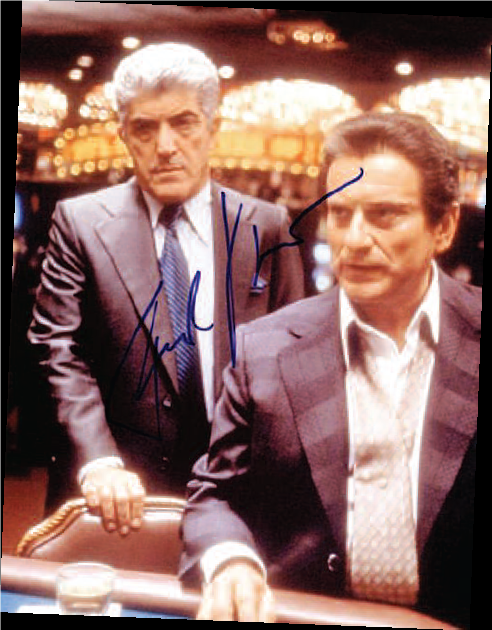
EDGE: Do you think your father had an impact on your professional career?
FV: Sure. I learned to be fearless from him, that you cannot be afraid to fail. That’s what kept me going through my music years when I worked from week to week or month to month. When the acting came around, I wasn’t intimidated by Robert DeNiro or Bruce Willis or anybody that I worked with.
EDGE: What was your first meeting like with DeNiro?
FV: I had to audition for Raging Bull at a hotel on Central Park West. I went up the elevator and got to the door, knocked, and a production assistant let me in. I came face-to-face with DeNiro, and he said, “Hello Frank. I’m Bob and I loved your work in Death Collector.” I said, “Hello Bob, I loved your work in Deer Hunter.”
EDGE: How did you get along with Scorcese?
FV: He’s a first-generation Sicilian like myself, and I think that shared culture really opened a lot of doors for us. That’s probably why I did three movies with him. And, of course, Joe and I had that chemistry, which he utilized really well. Marty really knows what he’s doing when it comes to putting a cast together. His mother and father were wonderful people, in fact, may they rest in peace. It was like being home, this was the way my home was! At my house we always had Sunday dinners, I spoke a little Sicilian and Neopolitan, and we always had espresso and played cards afterwards.
EDGE: About Pesci—he beat you up in Raging Bull and again in Goodfellas. Then you gave him a “well-deserved beating” in Casino. Did that even the score?
FV: You know [laughing] when you’re on a film, you don’t think “revenge” as you’re doing those scenes. It’s what the characters are doing, not you personally. It’s only afterwards, in interviews, that it comes up. But yes, it’s true, Billy Batts got his revenge. Although I think technically Billy got his revenge at the end of Goodfellas, when Joe got killed. And for the record, in those scenes those are stuntmen.
EDGE: All of the characters you’ve done have given you some interesting “street cred” in the Rap and Hip-Hop world.
FV: They have. In 1996, Hype Williams was directing the big-budget rap video for “Street Dreams” by Nas. It referenced the movie Casino and I was in the video. Hype asked me if I would serve as an acting coach for his first movie, Belly, which starred Nas and also DMX, Method Man and T-Boz. The rappers had already interviewed three traditional acting coaches and rejected them. They wanted a real “made guy” [laughing] so I went to meet with them and they agreed to work with me because of the image I portrayed. That’s the truth. And you know what? They had no knowledge of acting, but they were brilliant. They were all poets, so the dialogue came easy to them. It was keeping them on the spot so they stayed on camera that we had to work on. I also was in a couple of scenes. That movie was quite an experience.
EDGE: What roles do you look back on and feel like you really enjoyed doing?
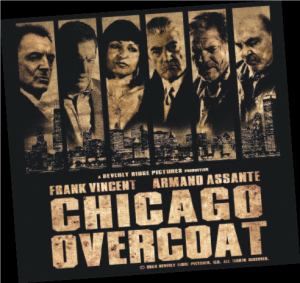 FV: I liked Lou Maranzano in Chicago Overcoat, which we shot in 2007 and was released in 2009. Lou had some interesting issues. Frank Marino in Casino was a good role for me, too, although it wasn’t a great speaking part. People think you have to speak a lot to have a big role but that’s not true. And of course, I enjoyed playing Phil Leotardo in The Sopranos because the writing was so brilliant. The level of discipline on that show was a real eye-opener as an actor. We shot each episode like a movie, on film, but in only 15 days. You could not deviate from the script. To change a single word—an uh or an and—you had to get permission.
FV: I liked Lou Maranzano in Chicago Overcoat, which we shot in 2007 and was released in 2009. Lou had some interesting issues. Frank Marino in Casino was a good role for me, too, although it wasn’t a great speaking part. People think you have to speak a lot to have a big role but that’s not true. And of course, I enjoyed playing Phil Leotardo in The Sopranos because the writing was so brilliant. The level of discipline on that show was a real eye-opener as an actor. We shot each episode like a movie, on film, but in only 15 days. You could not deviate from the script. To change a single word—an uh or an and—you had to get permission.
EDGE: Is Billy Batts the character you relate to most? It seems to be the one your fans gravitate towards.
FV: That’s certainly my most iconic role. You know, I didn’t realize how big Billy Batts would become—he really didn’t have a lot to do in that film. The fact I did that “Get your shine-box” scene with Joe is probably why it worked so well. If you played back all the takes we did at that bar, I mean, the timing of each was perfect every take. Marty said that to us. By the way, he also let Joe ad-lib in the famous “Do I make you laugh?” scene with Ray Liotta. Watch that scene again—you’ll see that Ray didn’t know what was coming.
EDGE: So will we see Billy again?
FV: In a way, you will. I have been working on a memoir with Steven Prigge, which I’m calling I Went Home and Got My Shine Box…Now What? Steven was my coauthor on the first book, A Guy’s Guy to Being A Man’s Man, which, by the way, is being optioned for a Hollywood comedy by J.C. Spink, who produced the Hangover films.
Editor’s Note: You may recall that Frank Vincent was our “cover boy” for the Gray Matter Issue earlier in 2012. You may also have seen him channeling the Rat Pack in a commercial for Ciroc Vodka with co-stars Sean (P. Diddy) Combs, Boardwalk Empire’s Michael Williams and Aaron Paul of Breaking Bad fame. Ever the entrepreneur, Frank is busy promoting Iso-Test, a performance-boosting dietary supplement. He is also prominently featured in Alan Robert’s new Killogy series of graphic novels, which debuted on Halloween. And if you are stumped for that perfect holiday gift, log onto frankvincent.com and check out the MOBblehead Doll, which utters Frank’s favorite movie lines, including Go home and get your shine box! Nobodys breakin’ up my party! and Give those Irish hoodlums a drink!
Life may not begin at 60, but if these folks are any indication, it doesn’t get any less interesting…
60
Rod Hirsch • Dunellen
Community Leader
A hero supporting our overseas heroes, Hirsch founded “Operation Shoebox” in 2005. It’s a volunteer-based organization dedicated to shipping care packages filled with all sorts of necessities to our military men and women far away from home.
Cathi Rendfrey • Delran
Community Leader
Rendfrey is vigorously involved in women’s rights, directing the Women’s Opportunity Center at the YMCA of Burlington County, which helps displaced homemakers gain economic knowledge through education, networking, outreach and job preparations.
61
Eric Maskin • Princeton
Economist
Maskin won a Nobel Prize in 2007 for his contributions to mechanism design theory, a branch of economics that describes how institutions function in the midst of inefficient markets. Maskin lives with his family in Albert Einstein’s former residence.
Cynthia Meryl • Westfield
Theatre Director
Meryl founded the New Jersey Youth Theatre in Westfield, serving as its Artistic Director and Master Teacher for more than two decades. NJYT offers high-quality theatre arts education at little or no cost to young people with the talent and ambition to make it to Broadway.
Jane Hanson • Montclair
Community Leader
As co-founder of Partners for Women and Justice, Hanson has helped thousands of women and children involved in domestic violence and abuse. The organization offers free legal services from many volunteer lawyers as well as a fulltime staff.
JoJo Starbuck • Madison
Olympian/Coach
A four-time U.S. figure skating champion, Starbuck devotes herself to tutoring the newest generation of ice princesses at the Essex Skating Club.
Max Weinberg • Atlantic Highlands
Musician
The E Street Band veteran became a breakout star after teaming with Conan O’Brien. His new group, The Max Weinberg Big Band, plays the hits of the 30s, 40s & 50s.
62
Gloria Gaynor • Green Brook
Musician
Gaynor was the original disco diva, and she holds on to that title by continuing to deliver knockout concerts all over the world. I Will Survive has become an anthem for personal strength and self-discovery.
Bruce Springsteen • Rumson
Musician
Springsteen ranks among the most influential songwriters and performers in the history of rock. More important, you never know when he’ll pop on stage at a Jersey Shore club for a surprise set.
Zygi Wilf • Springfield
NFL Owner
A Fairleigh Dickinson grad, Wilf built malls and apartment complexes throughout New Jersey. He headed a group that purchased the Minnesota Vikings in 2005.
Stevie Wonder • Alpine
Musician
The master performer continues to churn out new music and electrify audiences after five decades in front of the microphone.
63
Bruce Springsteen • Rumson
Musician
Springsteen ranks among the most influential songwriters and performers in the history of rock. More important, you never know when he’ll pop on stage at a Jersey Shore club for a surprise set.
Zygi Wilf • Springfield
NFL Owner
A Fairleigh Dickinson grad, Wilf built malls and apartment complexes throughout New Jersey. He headed a group that purchased the Minnesota Vikings in 2005.
Stevie Wonder • Alpine
Musician
The master performer continues to churn out new music and electrify audiences after five decades in front of the microphone.
Nelson Johnson • Hammonton
Judge/Author
While conducting legal research in Atlantic County, he pieced together the seamy history of AC and wrote a book. Maybe you’ve heard of it? Boardwalk Empire.
Southside Johnny Lyon • Ocean Grove
Musician
The originator of Jersey Shore Rock, Lyon inspired countless young musicians, including Jon Bon Jovi. His band recently returned from a European Tour to play an east Coast swing that included—where else?—The Stone Pony in Asbury Park.
64
Steve Forbes • Bedminster
Publisher
Taking after his father and grandfather, Forbes published his first magazine while an undergrad at Princeton. As CEO of the publication that bears his family name, he is one of the country’s most influential conservative forces.
65
Sol Barer • Mendham
Organic Chemist
Barer is leading the research into therapies that turn incurable blood cancers into manageable diseases. A Rutgers Ph.D., he ranks among New Jersey’s most acclaimed and honored scientific minds.
Connie Chung • Middletown
Newswoman
The second woman to ever co-anchor a major network’s national news broadcast, Chung has worked for ABC, NBC, CBS, CNN and MSNBC. Did hubby Maury make this list? Read on…
Bob Hurley • Jersey City
Basketball
Coach Hurley has led St. Anthony’s High in Jersey City to 26 state championships (and counting). He was just the third high school basketball coach to be inducted into the Basketball Hall of Fame.
Woody Johnson • Bedminster
Business
Leader/Philanthropist The great-grandson of J&J co-founder Robert Wood Johnson, Woody serves as Chairman and CEO of the company and also owns the NFL Jets. He is an avid supporter of charitable organizations, fundraising for lupus, diabetes and more.
66
Bettye LaVette • West Orange
Musician
LaVette has been pumping out jaw-dropping blues, jazz, rock and R&B performances for a half-century. Since moving to NJ a decade ago, the Great Lady of Soul has scored a couple of Grammy nominations and performed at the Kennedy Center.
Roy Pedersen • Lambertville
Art Historian
A noted gallery owner, Pederson has been working for a decade on a landmark book about the Impressionist painters of New Jersey. It’ll stir up a hornet’s nest in the art world when it’s published in 2013. Trust us on this one.
67
Danny DeVito • Interlaken
Actor
Whether playing Louie on Taxi or Frank on It’s Always Sunny in Philadelphia, DeVito has a way of making the most loathsome characters utterly charming.
Deborah Harry • Red Bank
Musician
As the front woman for Blondie, Harry was the New Wave diva of the 1970s. She graduated from Hawthorne High and Centenary College, so she’s NJ all the way.
68
Mel Karmazin • Mantoloking
Entertainment Executive
The co-founder of Infinity Broadcasting in the 1980s, Karmazin pushed sports talk into the cultural stratosphere with WFAN, and later brought Howard Stern to millions of listeners as CEO of Sirius XM Radio.
69
George Benson • Englewood
Musician
A jazz guitar prodigy in the 60s, Benson launched an epic solo career in the mid-70s with Breezin’. The album went triple-platinum, selling more than three million copies. In 2009, Benson was recognized as a Jazz Master—the National Endowment of the Arts’ highest honor.
Leon Cooperman • Short Hills
Business Leader/Philanthropist
The billionaire head of Omega Advisors devotes a huge percentage of his attention and wealth to charity and education. Cooperman has followed the lead of Warren Buffett and Bill Gates in signing The Giving Pledge.
Peter Kellogg • Short Hills
Business Leader/Philanthropist
Kellogg took over his father’s specialty brokerage at age 30 and transformed it into a Wall Street market-maker. Since selling the company for $6.5 billion in 2000, Kellogg has been a generous supporter of countless causes, from his old high school to the U.S. Ski Team.
Joe Pesci • Lavallette
Actor
The quintessential pugnacious Garden Stater, Pesci was a successful child actor on Broadway and TV in the 1950s. He was running a restaurant in the Bronx in the late-70s when he got a call from Robert De Niro to audition for a co-starring role in Raging Bull. The rest, as they say, is history.
70
Muhammad Ali • Cherry Hill
Athlete
Ali was the first sports star to use his fame to draw attention to social injustice—and paid a heavy price. All these years later, the three-time heavyweight champ is still revered as both an athlete and activist.
Bonnie McCay • Bridgewater
Ecologist
The Rutgers professor is known for her extensive research focusing on sustainable marine fishery conditions and ecosystems around the world, while stressing the significance of the adaptation of institutions, such as science, law and property.
71
Daniel Murnick • Bernardsville
Physicist Another Rutgers professor, Murnick pioneered the development of the Laser Assisted Ratio Analyzer—a breath test that detects stomach/intestinal ulcers, which replaces invasive surgery.
72
Roger Ailes • Cresskill
Newsman
Say what you will about his politics or his TV network, but long before joining FOX, Ailes was already a legend as a conservative media consultant. He worked for the likes of Nixon, Reagan and Bush I, and engineered Rudy Giuliani’s first mayoral campaign in 1989.
73
Carolyn Clark • Long Valley
Ballet Director
The American Ballet Theatre performer used her knowledge and love of the dance world to fashion a highly acclaimed company and school in Livingston. It’s been flourishing under her direction since the 1960s.
Ben E. King • Teaneck Musician
King’s recording of Stand By Me had the unique distinction of being a Top 10 single 25 years apart, in 1961 and again in 1986. His nonprofit, The Stand by Me Foundation, reaches out to young people in Bergen County.
Maury Povich • Middletown
TV Personality
The father of tabloid infotainment is married to Connie Chung. They met in the early 80s when both were working in a Washington D.C. newsroom. His self-titled talk show has been pulling huge ratings for more than two decades.
74
Pete Dawkins • Rumson
Athlete/Military Leader
Dawkins turned down a scholarship to Yale to attend West Point in the 1950s. Good decision. He won the Heisman Trophy for Army in 1958 and retired with the rank of Brigadier General 25 years later. In between, he attended Oxford on a Rhodes Scholarship and while there taught the Brits an overhand rugby throw dubbed the Yankee Torpedo.
Joyce Carol Oates • Princeton
Author
Oates began writing at age 14 and has been on a straight path of success and determination ever since. Them, one of her first remarkable novels, has been followed by over 50 published works. She has been a creative writing professor at Princeton since 1978.
75
C.K. Williams • Princeton
Poet
The Newark-born poet won the Pulitzer Prize in 2000 for Repair, his volume regarding forgiveness. Like Oates, Williams teaches creative writing at Princeton.
76
Alan Alda • Leonia
Actor
During his years as the star of M*A*S*H*, Alda commuted from New Jersey to Hollywood so as not to uproot his family. Six Emmys later, his star continues to burn brightly, with unforgettable turns on series such as The West Wing, 30 Rock and The Big C. Alda also starred in the Broadway revival of Glengarry Glen Ross and the 2011 film Tower Heist.
Bob Lucky • Fair Haven
Electrical
Engineer Lucky won the coveted Marconi Prize for developing the adaptive equalizer that quadrupled data transmission rates for modems and telephone lines. An expert on the relationship between technology and society, Lucky chairs the group appointed by Gov. Christie to oversee the redevelopment of Ft. Monmouth.
Robert Wilson • Holmdel
Astronomer
Along with Bell Labs co-worker Arno Allan Penzias, Wilson discovered the cosmic microwave background radiation that proved the Big Bang theory, in 1964. They received a Nobel Prize in physics 14 years later.
77
Thomas Kean • Bedminster Township
Politician
Our 48th Governor (1982 to 1990)—as well as the Chairman of the “9-11 Commission”—Kean served as President of Drew University for 15 years. Kean University also bears his family name.
The Amazing Kreskin • North Caldwell
Mentalist
Born George Kresge in Montclair, Kreskin was inspired by comic book hero Mandrake the Magician. Not a psychic or an illusionist, Kreskin nonetheless has an uncanny talent for predicting the future. (He knew you’d be reading this article.)
78
Michael Graves • Princeton
Architect
Renowned for his interior design and commercial and residential buildings, Graves also produced sleek, functional domestic items for Target. He taught for nearly four decades at Princeton and is the director of the firm Michael Graves & Associates.
79
Danny Aiello • Saddle River
Actor
Few actors can play ugly and violent, and also gentle and sensitive, as well as Aiello. Stop and think of the big-time films he’s been in—Moonstruck, Bang the Drum Slowly, Do the Right Thing, Broadway Danny Rose, Pret-a-Porter, The Godfather. Simply amazing.
80
Wally Broecker • Closter
Geochemist
The man who coined the term Global Warming in the 1970s has authored more than 450 papers and 10 books, including The Great Ocean Conveyor in 2010. It was Broecker who convinced Land’s End billionaire Gary Comer to devote much of his fortune to raising awareness about climate change.
Jim Bunning • Cherry Hill
Athlete/Politician
The author of a perfect game against the Mets in 1964, Bunning followed a Hall of Fame baseball career with more than two decades of service in the U.S. Senate (R Kentucky). Bunning returned to South Jersey after leaving Washington in 2011.
Herwig Kogelnik • Rumson
Electrical Engineer
Among Kogelnik’s influential contributions during 40 years at Bell Labs were distributed feedback lasers, holographic data storage and multichannel optical networks. That last one is what makes the Internet work—take that Al Gore!
James P. “Doc” McGlone • Boonton
Educator
The beloved theater director staged more than 250 productions during his tenure at Seton Hall. He established an enduring Theater-in-the-Round tradition on the South Orange campus before retiring in 2011.
Bob McGrath • Teaneck
Entertainer
Known to generations of kids as Bob on Sesame Street, McGrath stands as one of the most beloved and trusted people in the history of children’s television.
81
Dick Kazmaier • Rumson
Athlete/Business Leader
Kazmaier appeared on the cover of Time in 1951 during a season that saw him win the Heisman Trophy for the Princeton football team. He turned down a chance to play in the NFL, choosing instead to attend Harvard Business School. Kazmaier went on to become one of the most respected figures in the sports marketing and finance industry.
John McPhee • Princeton
Writer
McPhee’s first book, A Sense of Where You Are, profiled fellow Princetonian Bill Bradley. Since then his work has garnered countless accolades and awards, including a 1999 Pulitzer for Annals of the Former World. McPhee’s roommate in school was Dick Kazmaier.
84
Mary Higgins Clark • Saddle River
Author
The Queen of Suspense has pumped out 42 best-sellers. She has been the President of the Mystery Writers of America and served as Chairman of the International Crime Congress.
John Nash • Princeton Junction
Mathematician
The subject of the film A Beautiful Mind, Nash broke new ground on game theory while struggling with paranoid schizophrenia. His mathematical theories have a wide range of applications, from economics to artificial intelligence, and provide an intriguing prism through which to view chance and events.
85
Bill Jersey • Lambertville
Filmmaker/Artist See
Judith Trojan’s profile of Bill on the facing page.
Clark Paradise • Toms River
Community Leader
Clark and his wife, Jean (81), stand out among the thousands of selfless community volunteers around the state. The Paradises created Your Grandmother’s Cupboard to collect and distribute desperately needed personal-care items (plus food and clothing) to impoverished families in temporary housing.
86
Bucky Pizzarelli • Saddle River
Musician
Pizzarelli was a guitar virtuoso long before it went electric, earning a seat in Vaughn Monroe’s big band as a teenager in the 1940s. He was voted into the New Jersey Hall of Fame last year.
87
Yogi Berra • Montclair
Athlete
One of baseball’s great pressure players—and the author of countless off-kilter quotes—Yogi is a regular institution in his adopted hometown of Montclair.
88
Frank Lautenberg • Cliffside Park
Politician
The oldest member of the U.S. Senate, Lautenberg initially retired but returned to Washington after Bob Torricelli got into hot water. Before entering politics, Lautenberg ran ADP in Roseland.
111
Melva Radcliffe • Wall
Supercentenarian
Yes, you read that right. Radcliffe was born in Paterson in 1901 and is closing in on the state longevity record of 112. She has survived colon cancer and two broken hips. Both of her sisters also reached triple-digits.
Editor’s Note: Is there an extraordinary 60+ New Jerseyan you think should have made this list? Tell us why on our Facebook page – EDGE Magazine (NJ).






